Philips A20 kits
Expand from EE8 to EE20
About small SBC systems
Expand from EE8 to EE20
Expand from EE8 to EE20
As a boy of 14 year I was given an EE8 kit. And it opened the world of electronics for me! The Pionier kit was fun to build, used a lot to listen to the radio, but hardly made me study or do experiments. The book and the experiments did! Especially the colorful book, with explanations of concepts, clear pictures of the experiments and the template system worked for me.
The original kit did survive till today, more or less. Though many parts were damaged, reused or lost. Buying of other incomplete EE8 boxes allowed me to do a restoration (some alien parts still in the box!) and this is (with the original Pionier) the only kit still in my possession. The book and templates (blue ink on grey carton) did survive (the EE1 and EE2 template alas were lost and replaced with the black and white versions of newer kits).
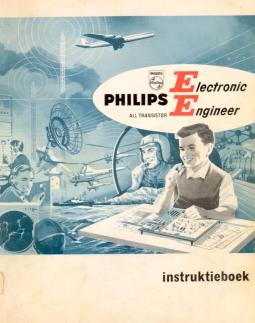 |
My dutch colour manual , |
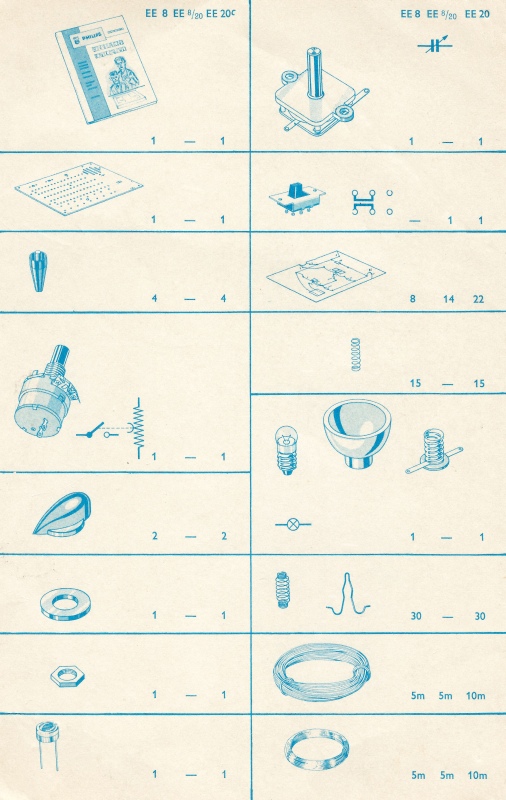 |
PDF scan of lists of kit contents, scanned designs and front panel templates |
 |
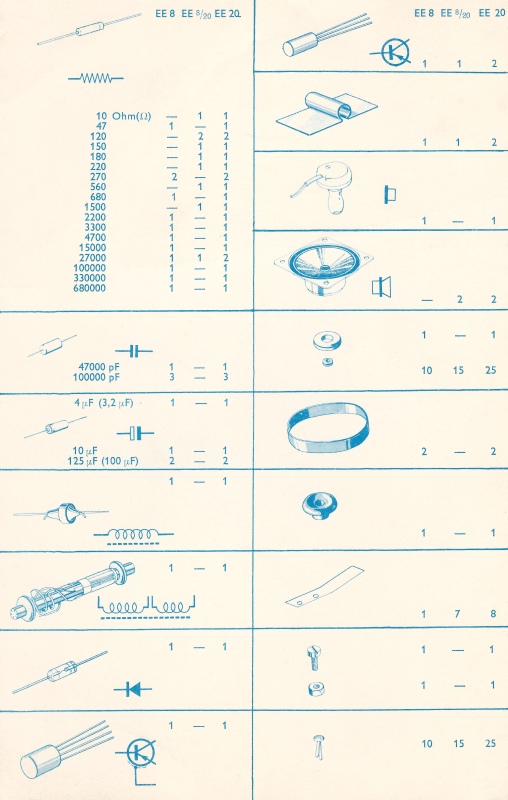 |
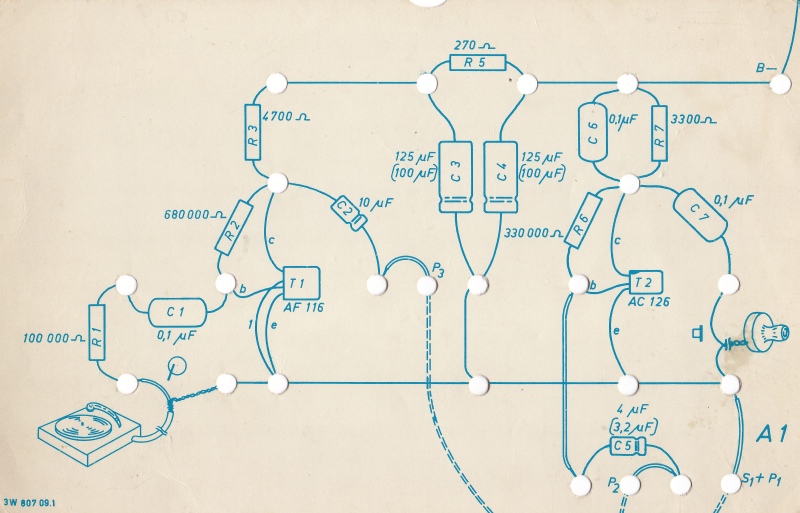 |
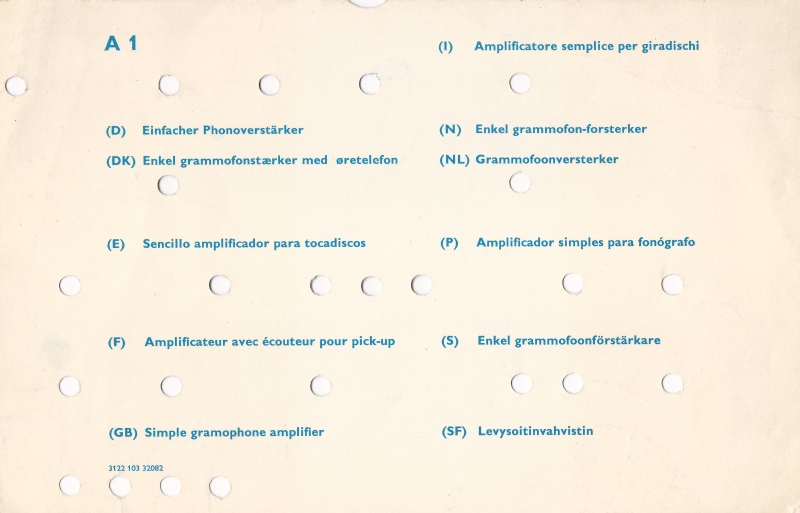 |
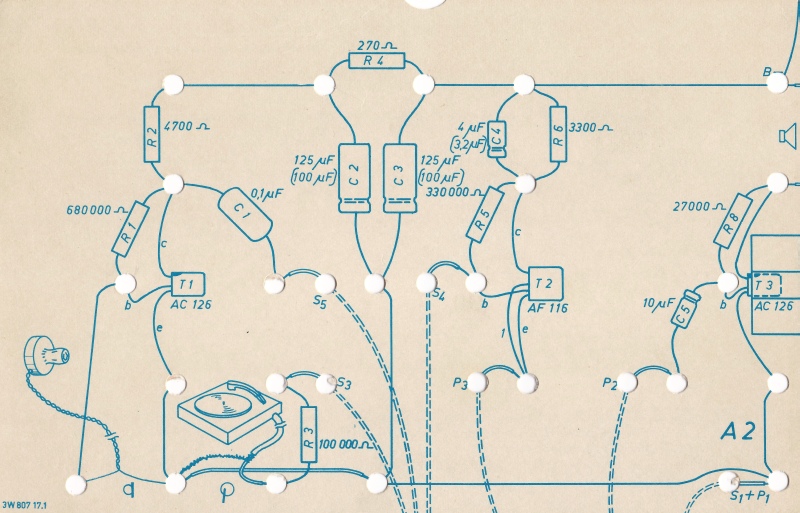 |
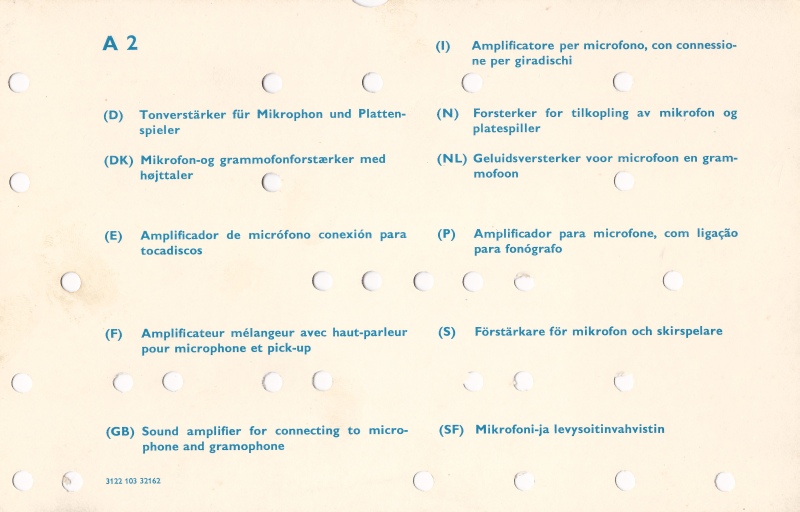 |
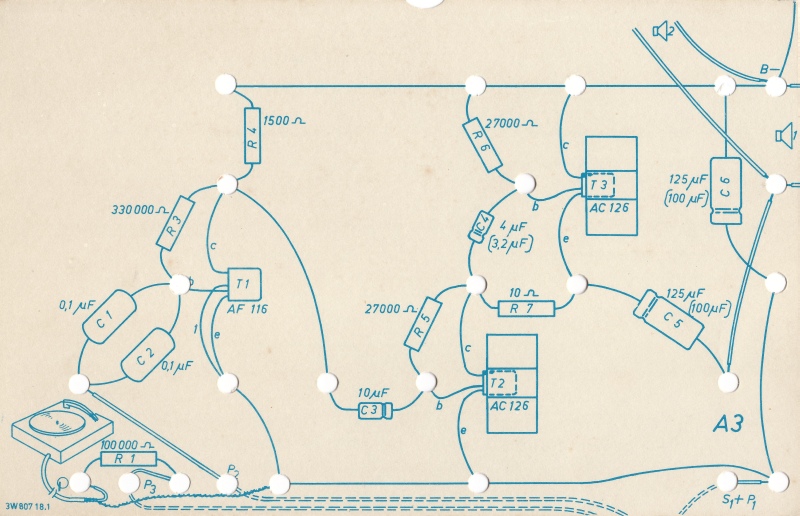 |
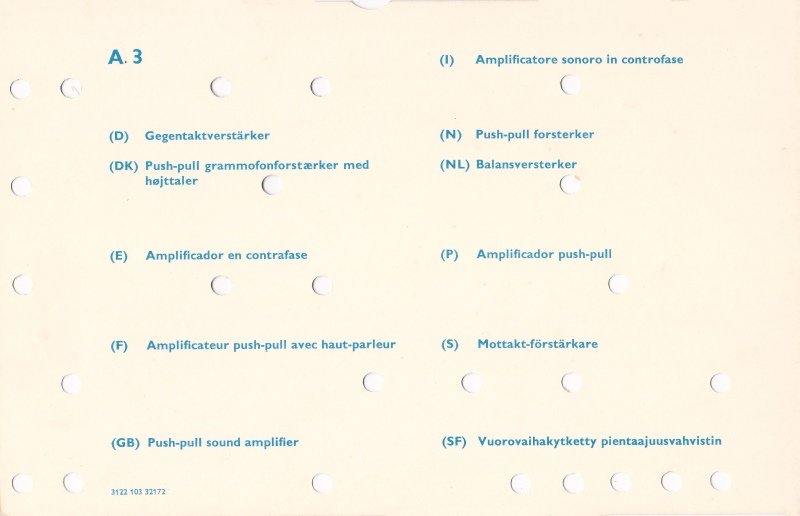 |
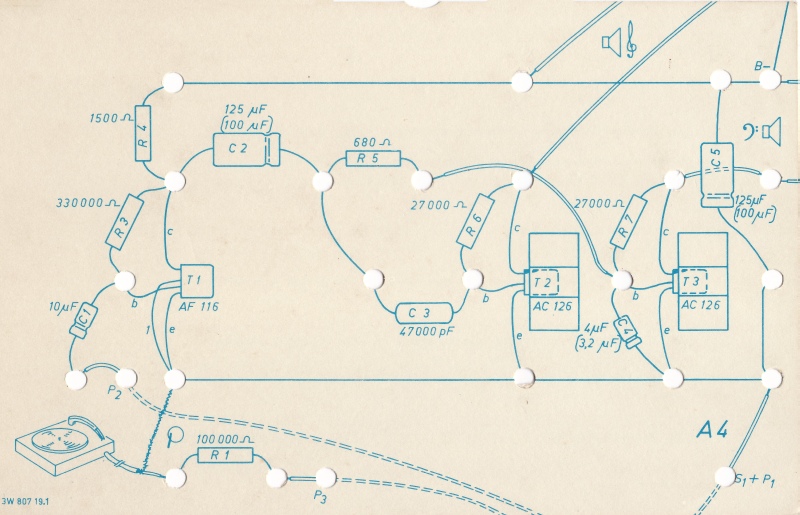 |
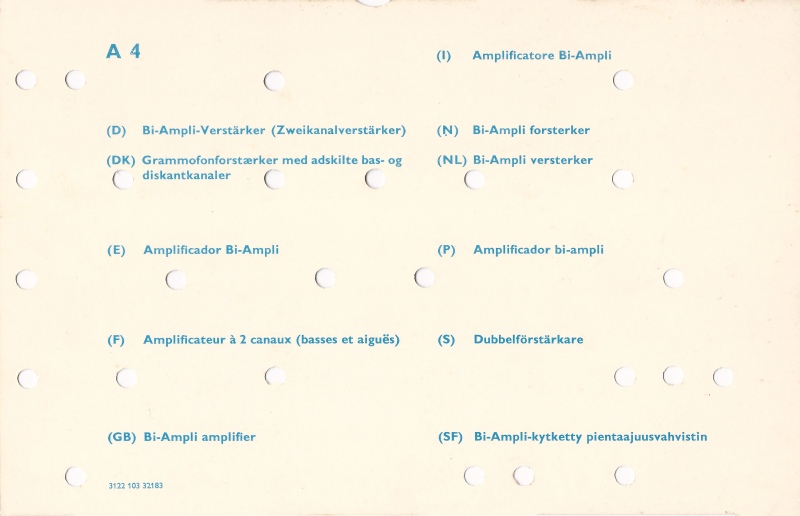 |
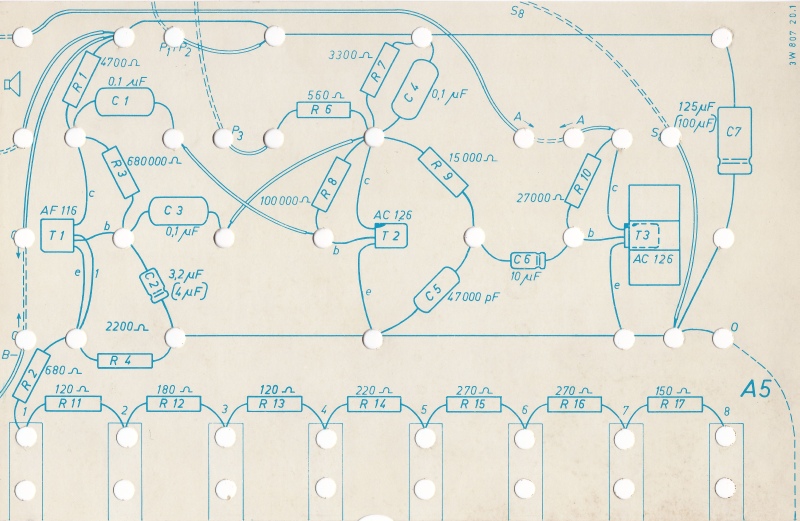 |
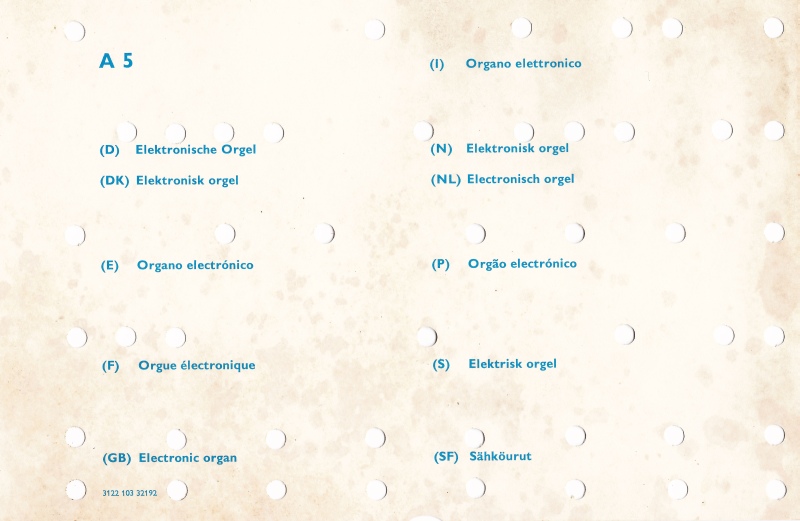 |
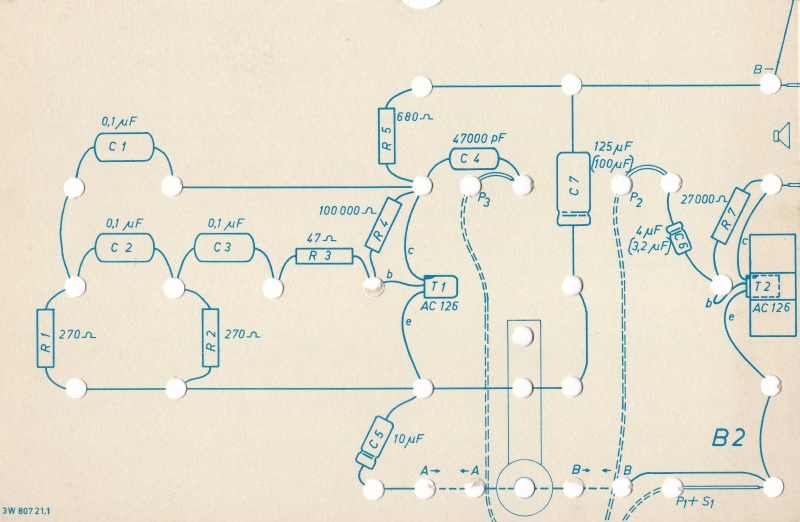 |
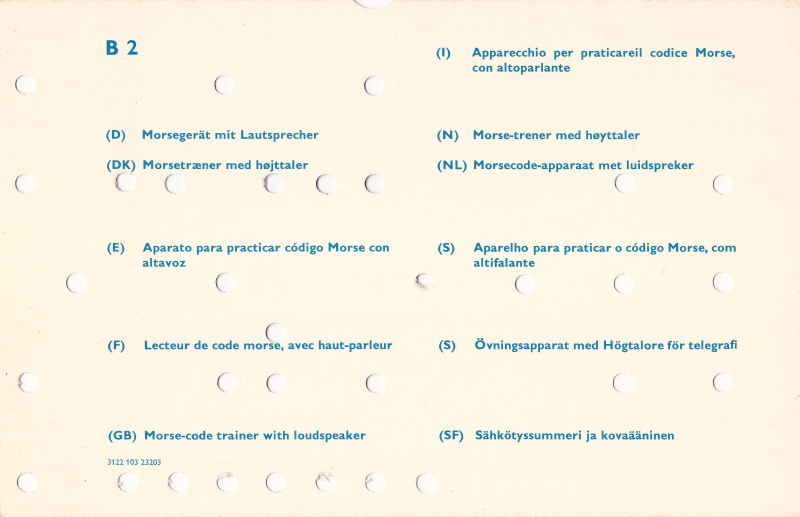 |
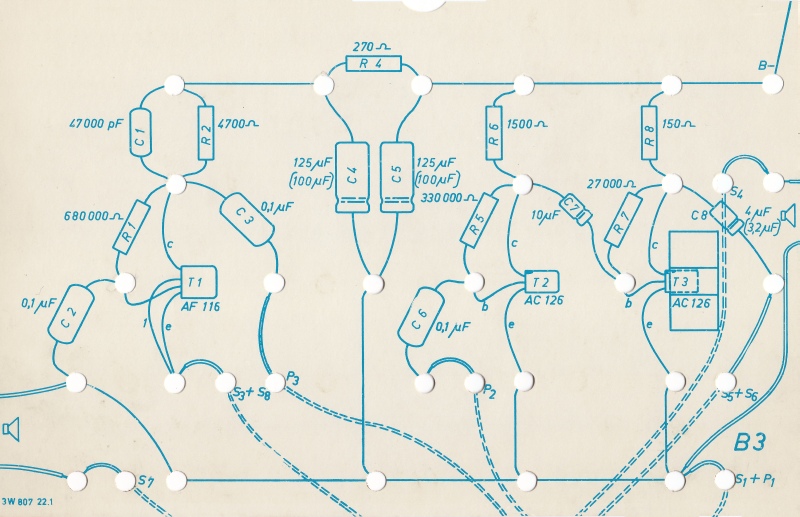 |
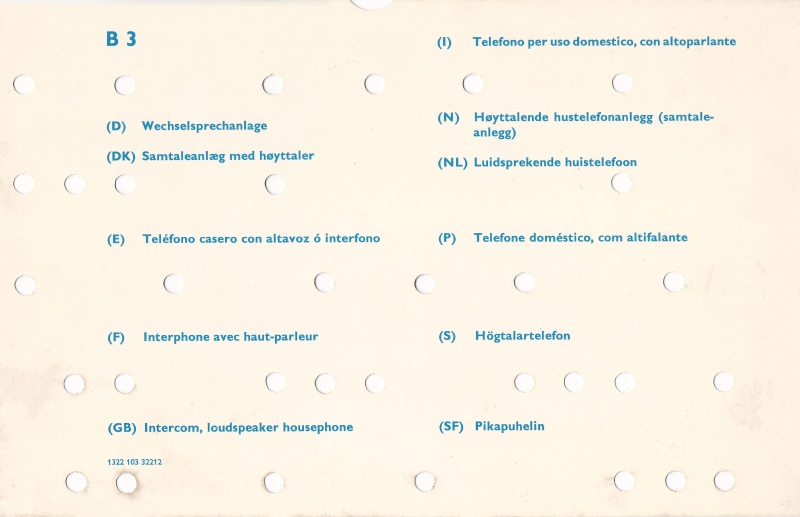 |
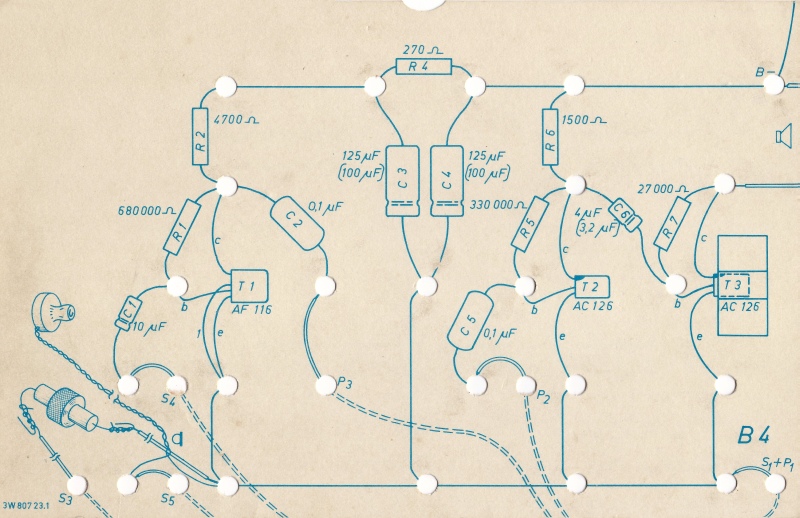 |
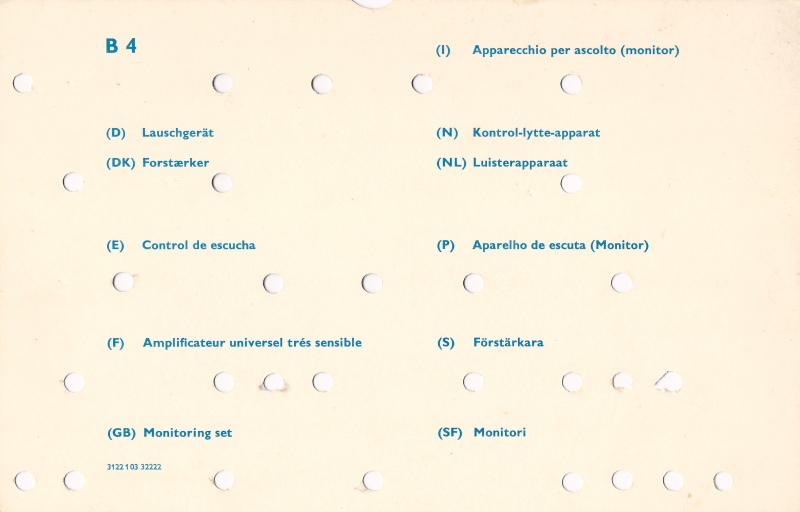 |
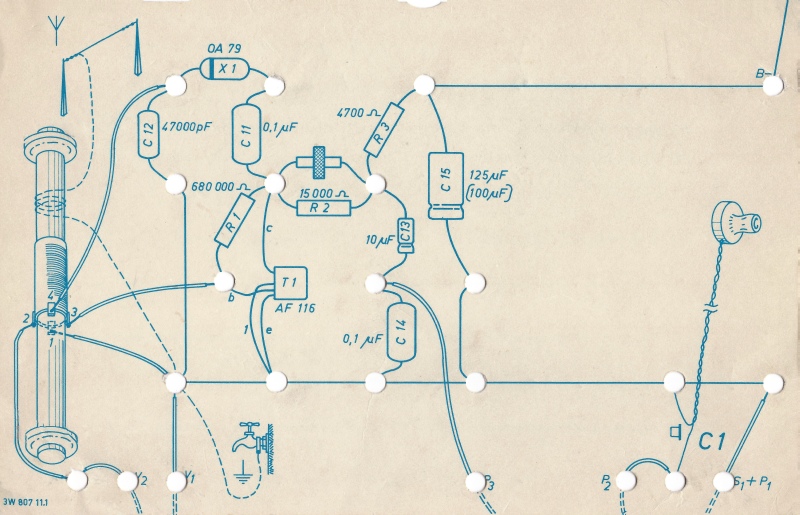 |
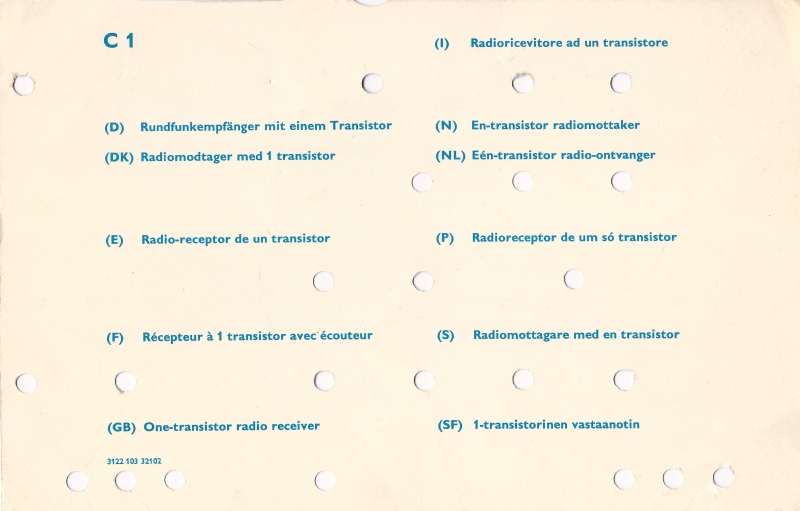 |
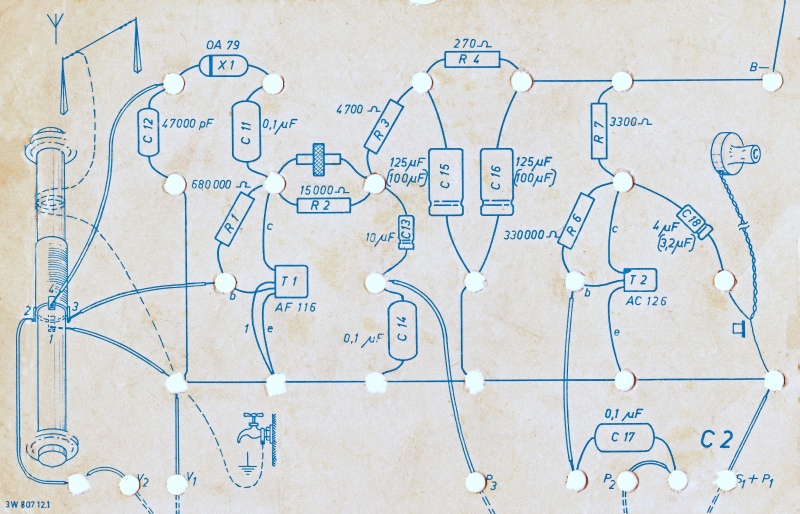 |
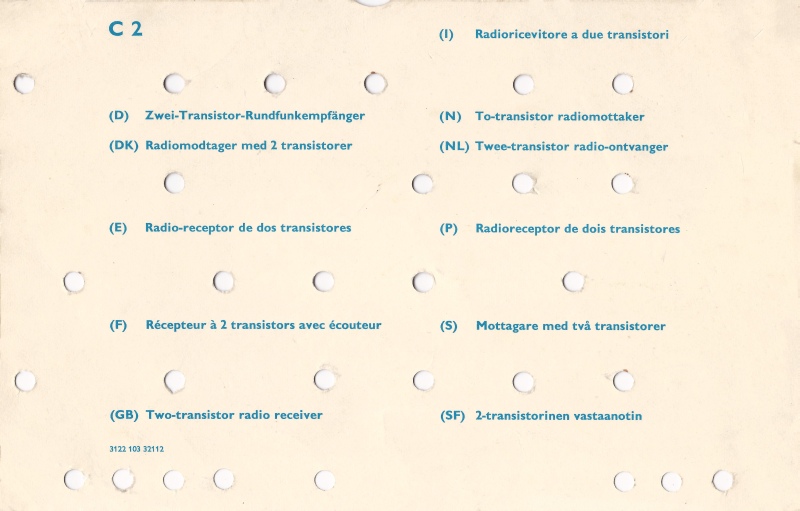 |
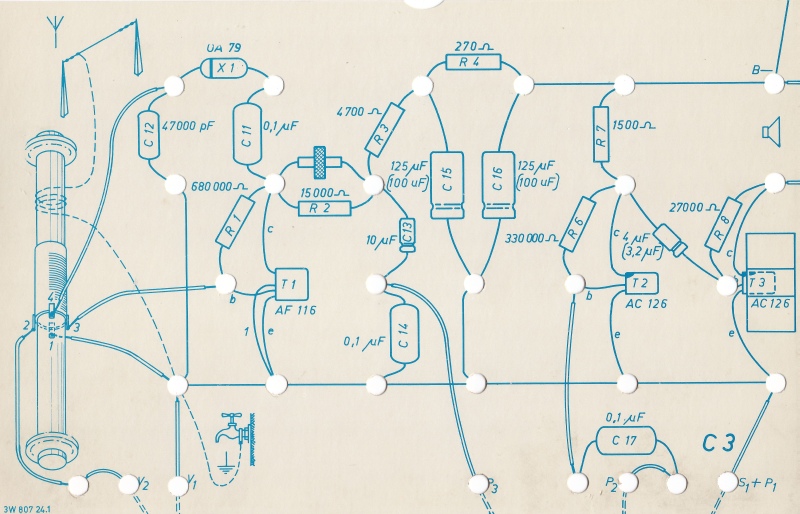 |
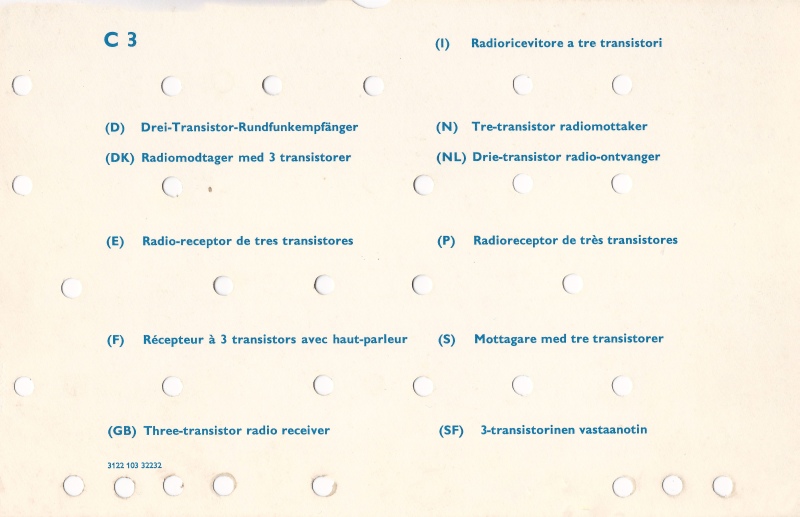 |
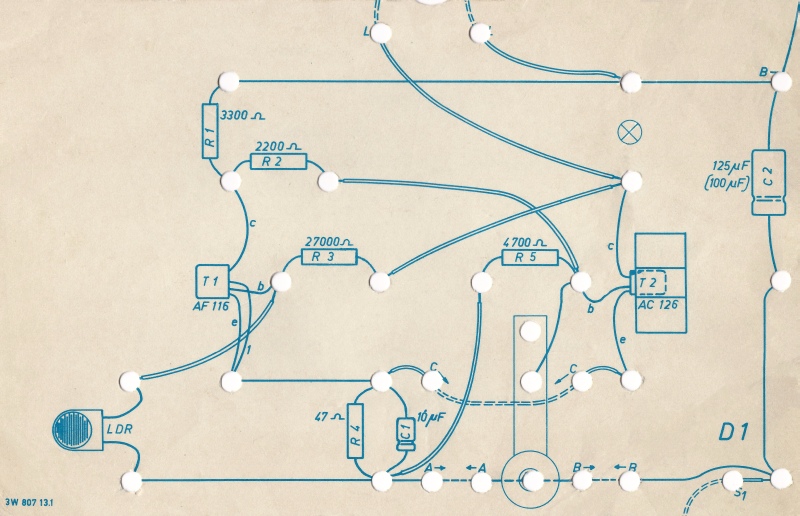 |
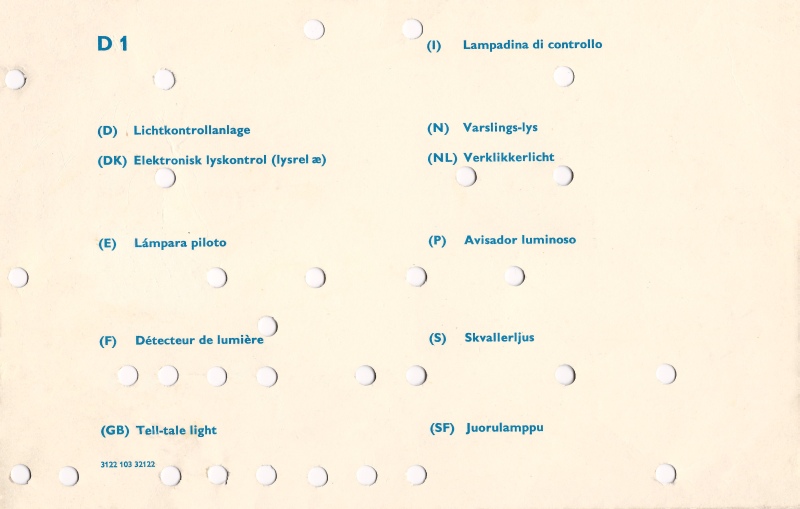 |
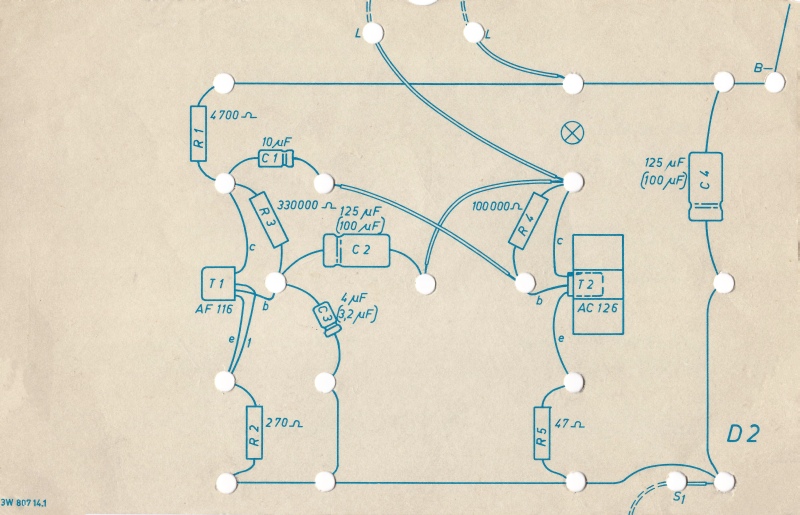 |
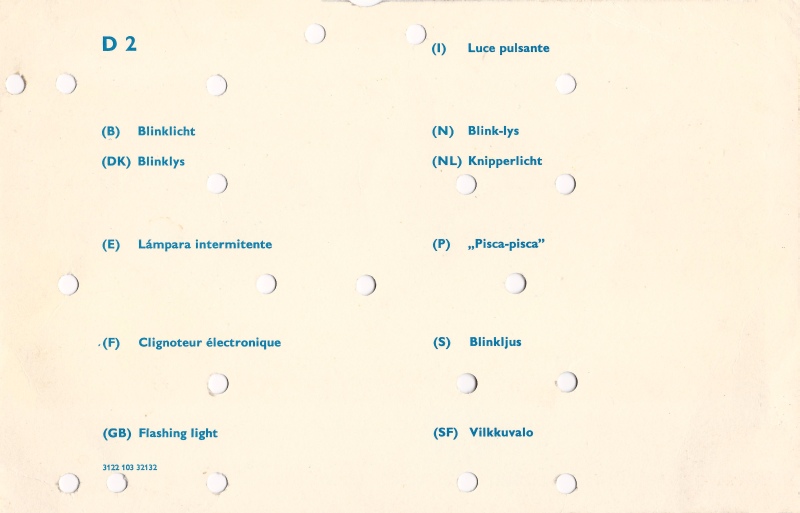 |
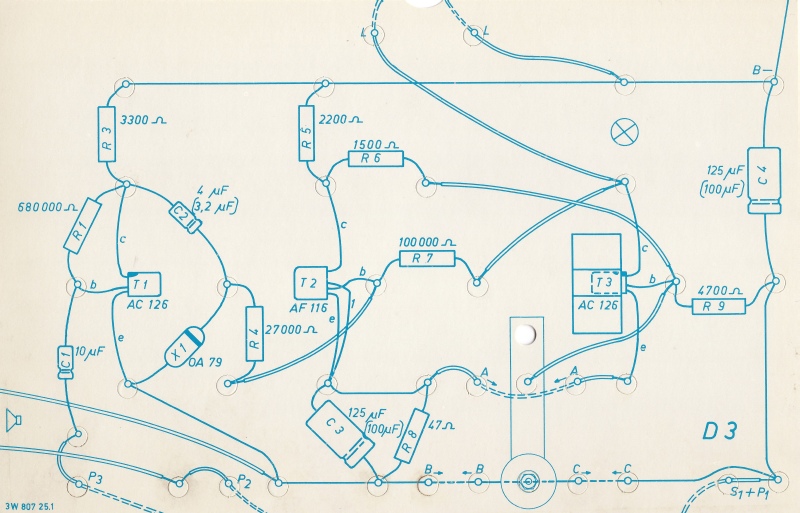 |
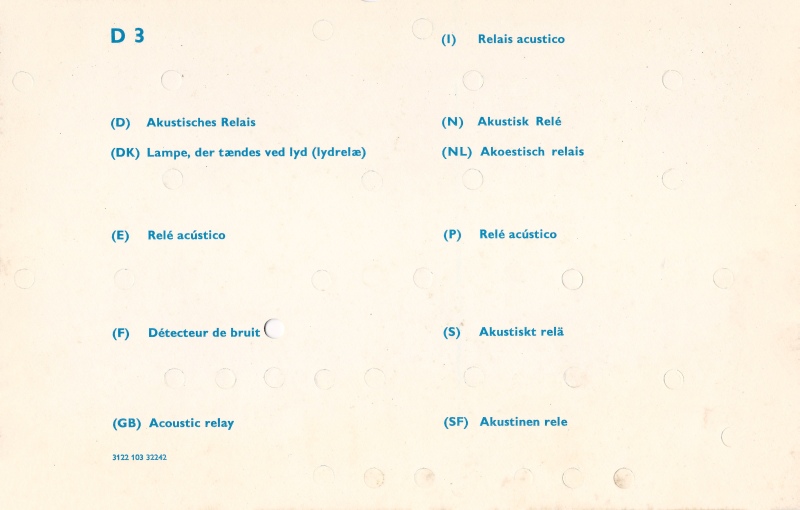 |
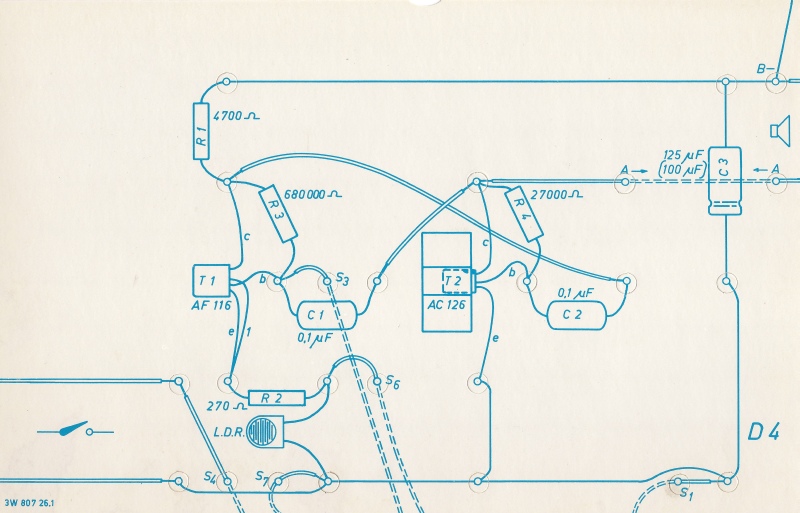 |
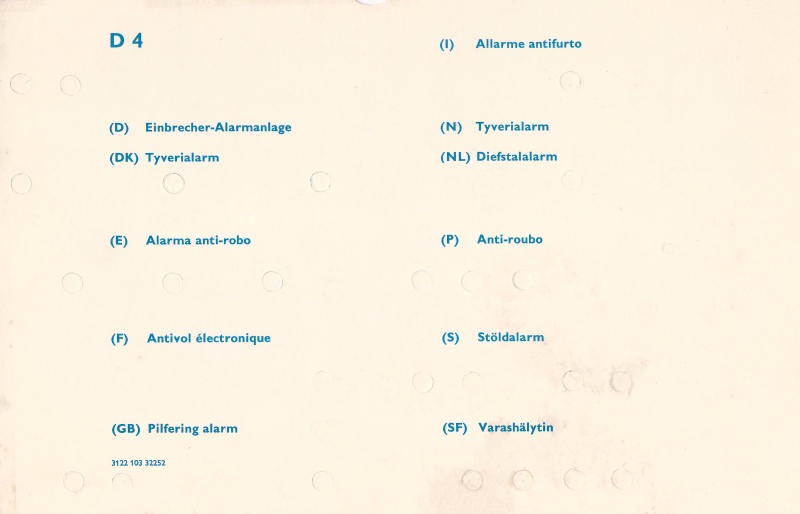 |
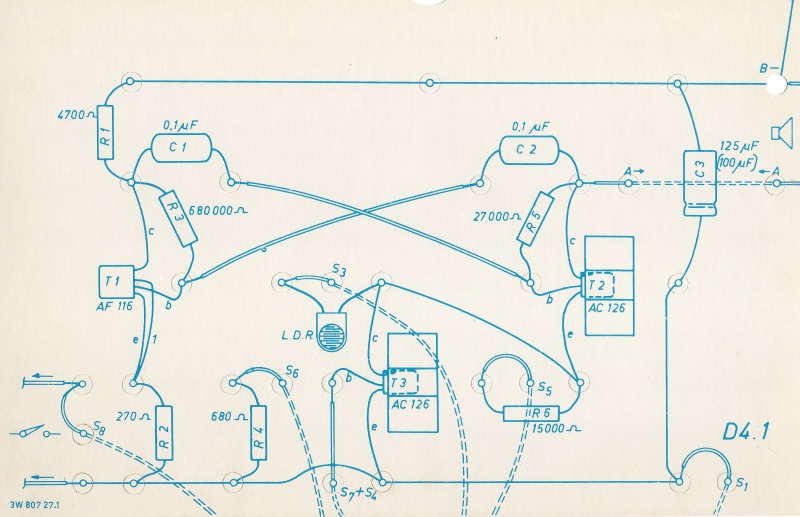 |
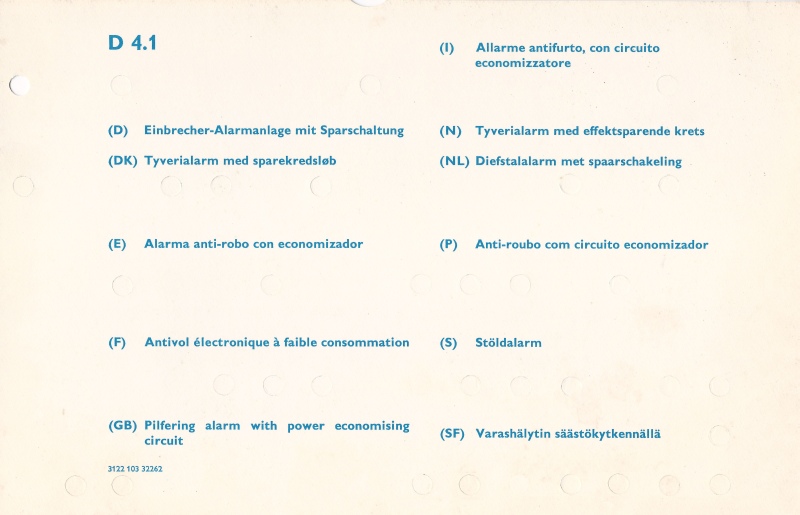 |
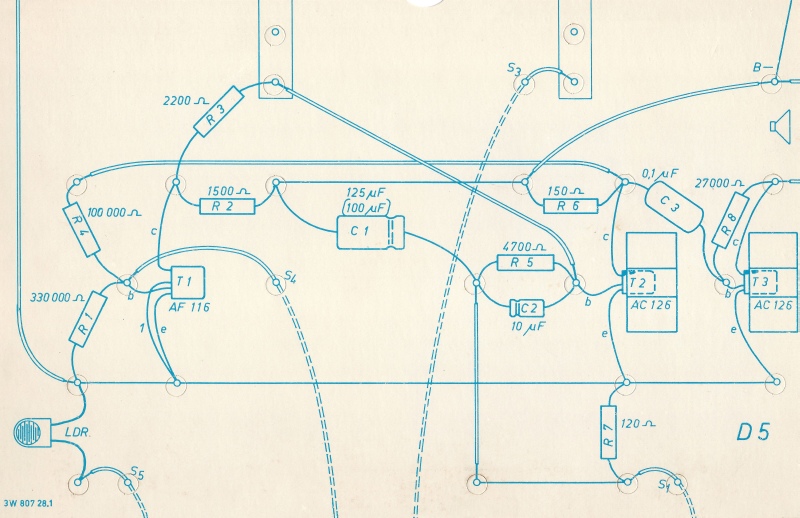 |
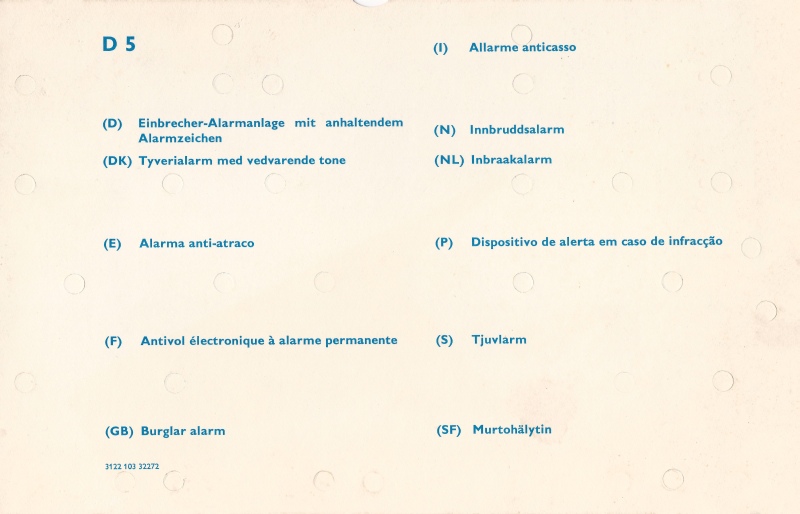 |
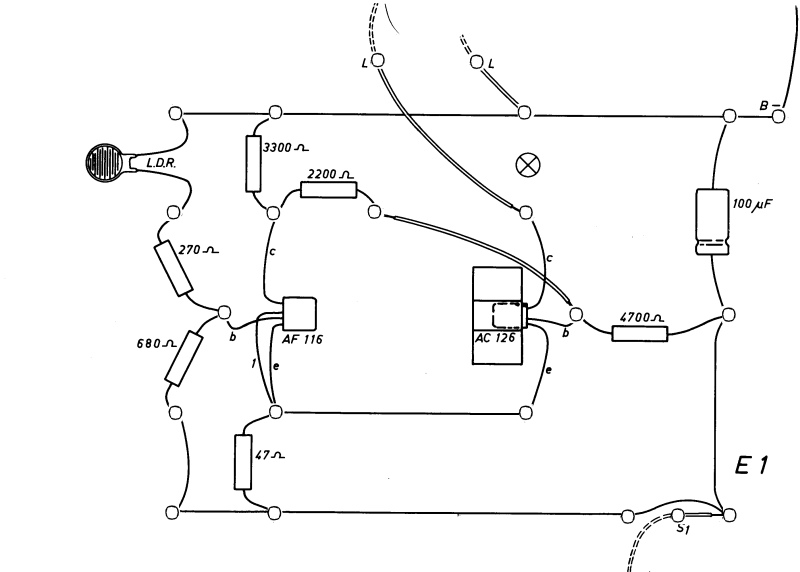 |
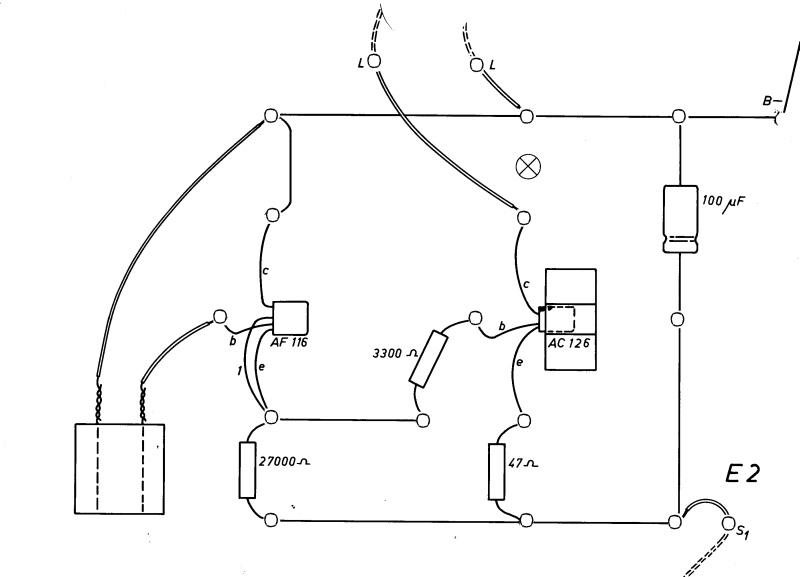 |
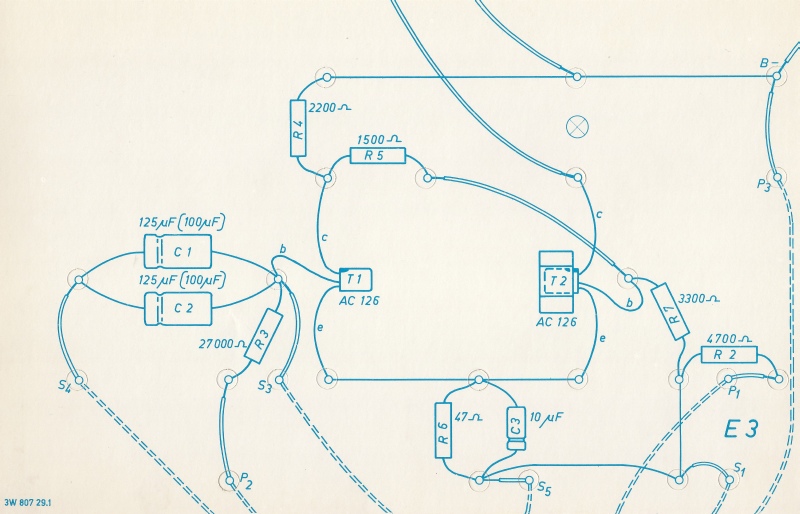 |
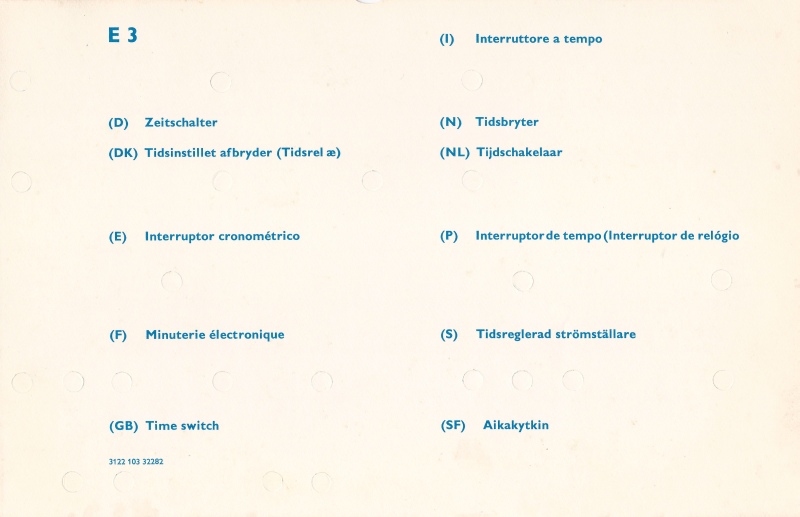 |
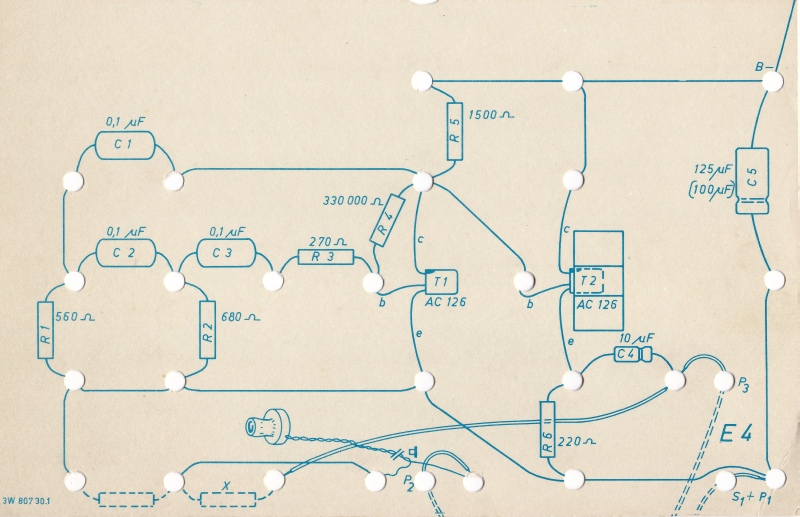 |
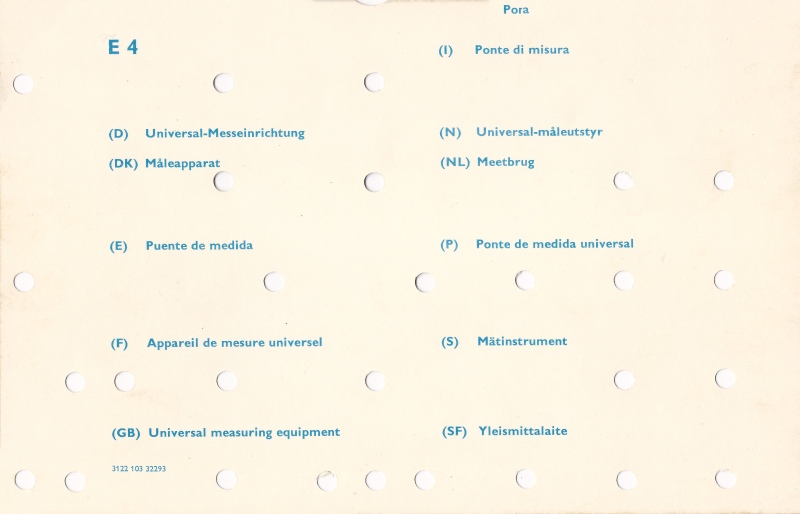 |
 |
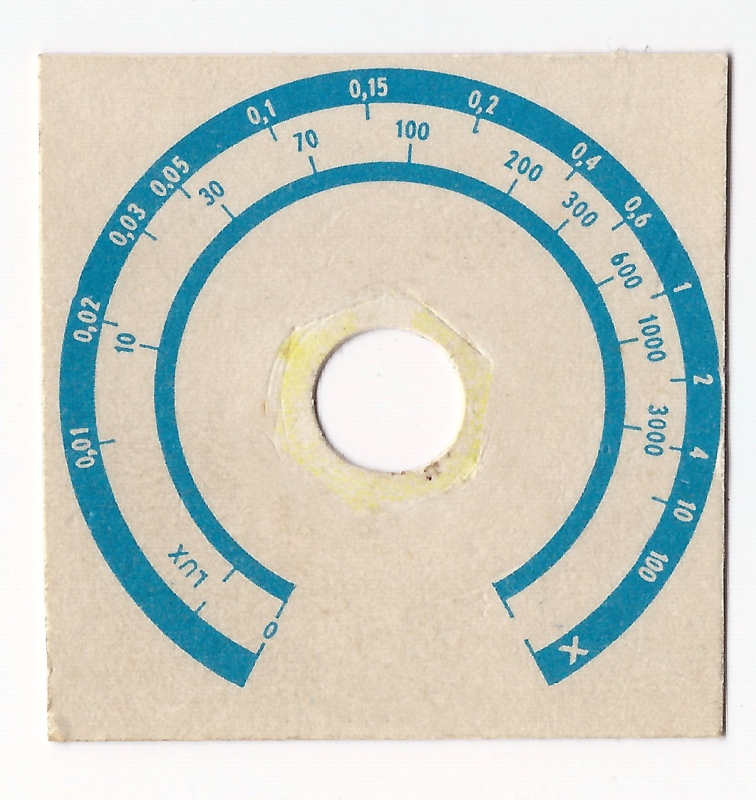 |
These kits are published by Philips, not only in the Netherlands, but in many countries and native languages like Germany, USA (Norelco branded), Italy, Argentina and South Africa.
After the Philips Pionier Junior series Philips greatly enhanced the experimenters kit offering:
Not only were these kits quite versatile, they were also offered in all majar countries in local languages where Philips was active at that time.
On this page I show you the kits in my possession and the pictures and manuals of a number of non-dutch kits.
I have scanned the following manuals:
– the original manual that came with my EE8 box: dutch, colour circuit diagrams and colour photo’s of the board layouts. The size is A4. Documented better on my EE8 page.
– a dutch manual with the same contents but with a small landscape A5 format in black and white
– a german manual in A4 format with inside two small landscape A5 format books. – a french manual like the german – a UK manual like my original – a spanish manual
The Italian manual is scanned by Federico Paoletti, the Brasilian by Jose Daher de Barros. Photos of the Argentinian manual are made by Andres.
 |
My dutch colour manual , |
 |
lists of kit contents, scanned designs and front panel templates in colour |
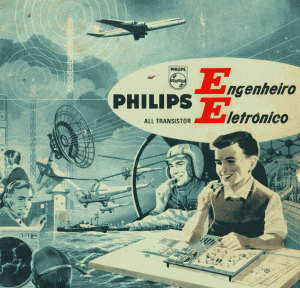 |
The Brasilian EE8/20 manual The complete manual is scanned by Jose Daher de Barros, thank you! |
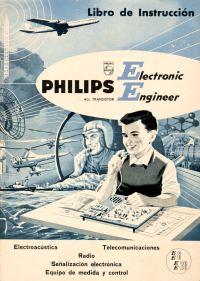 |
The Spanish EE8/20 manual |
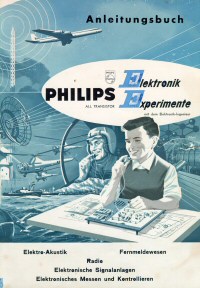 |
Part of the german manual in PDF format , with contents page, list of experiments and component list. The complete manual is scanned now and is available in the library of Tor Gjerde. |
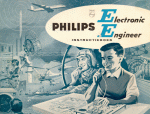 |
Part 1 of the dutch black and white manual Part 2 of the dutch black and white manual |
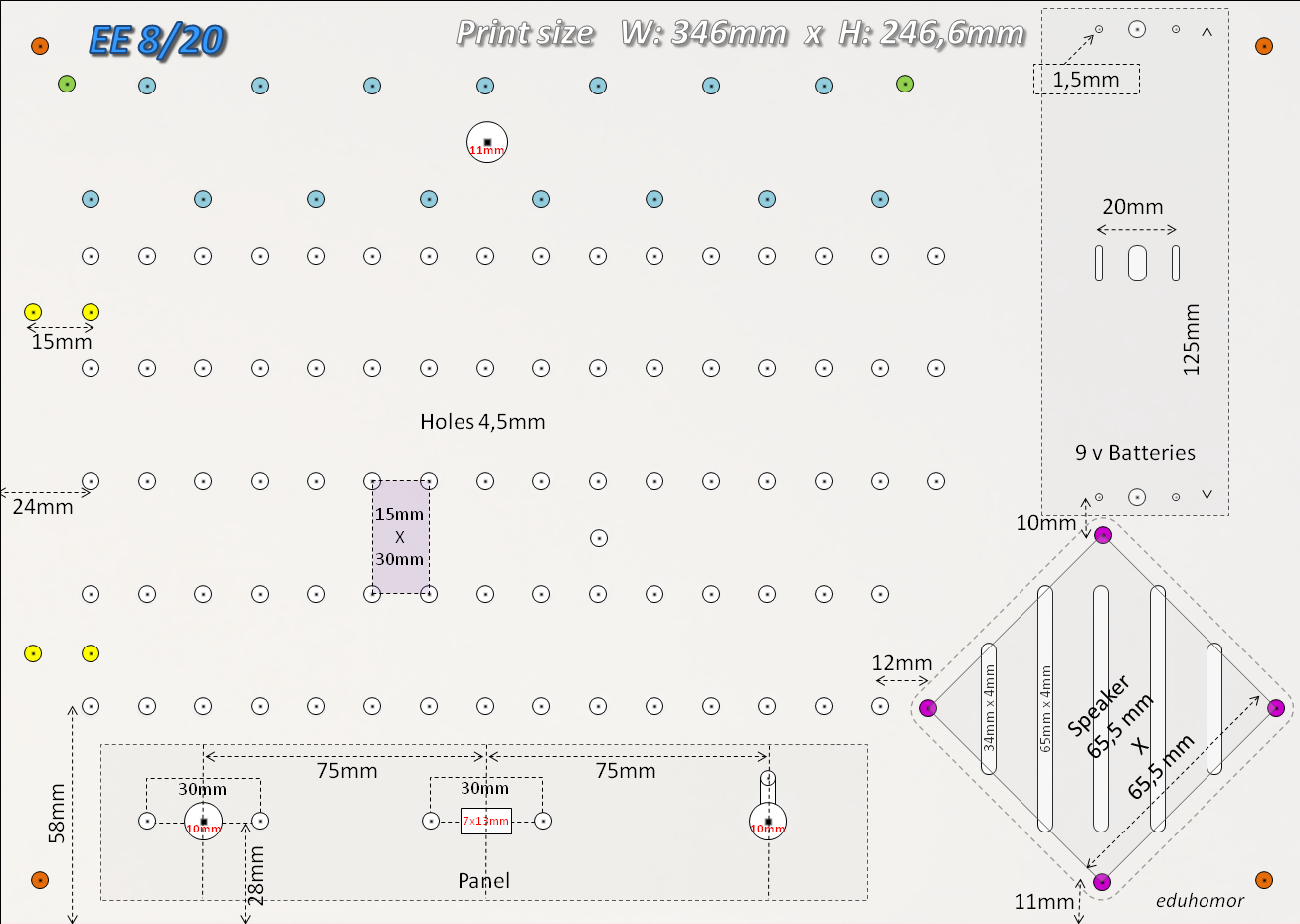 |
The A20 board templates black and white E3 and E4 |
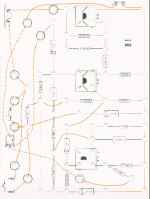 |
The EE8/EE20 board templates black and white (later version than the colour version above) |
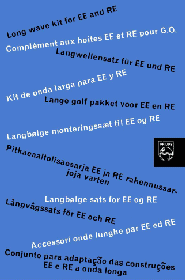 |
LW add-on EE1916 as found on the library of Tor Gjerde
It is a longwave add-on for RE and EE kits. See the picture on the right for the box. |
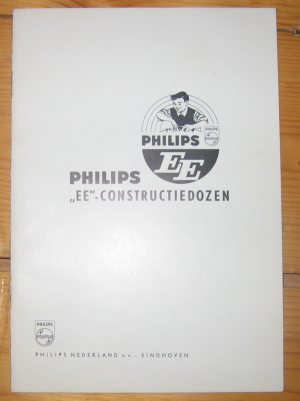 |
Older version of the manual |
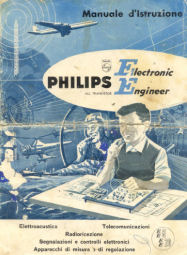 |
Italian EE8/20 manual (thanks to Federico Paoletti) |
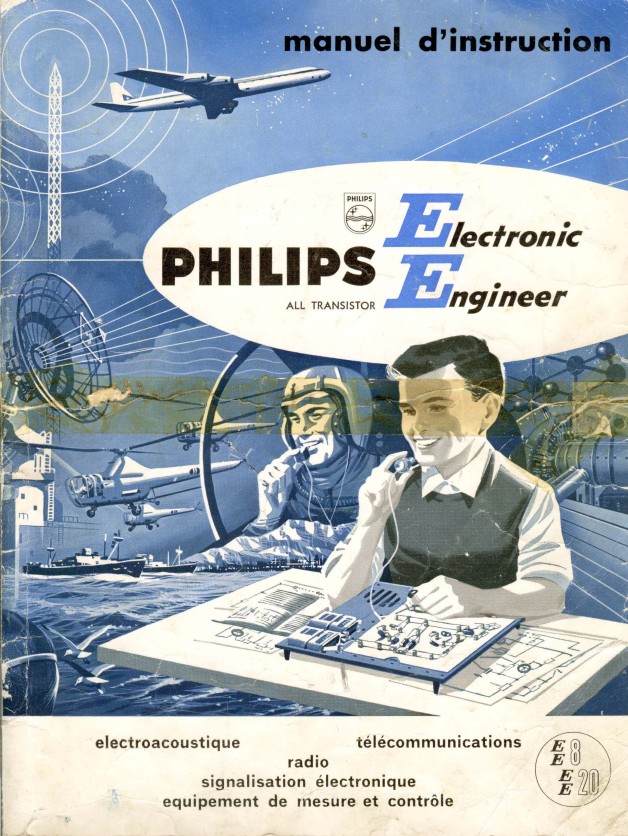 |
French EE8/20 manual (thanks to Francois Guillet F6FLT) |
 |
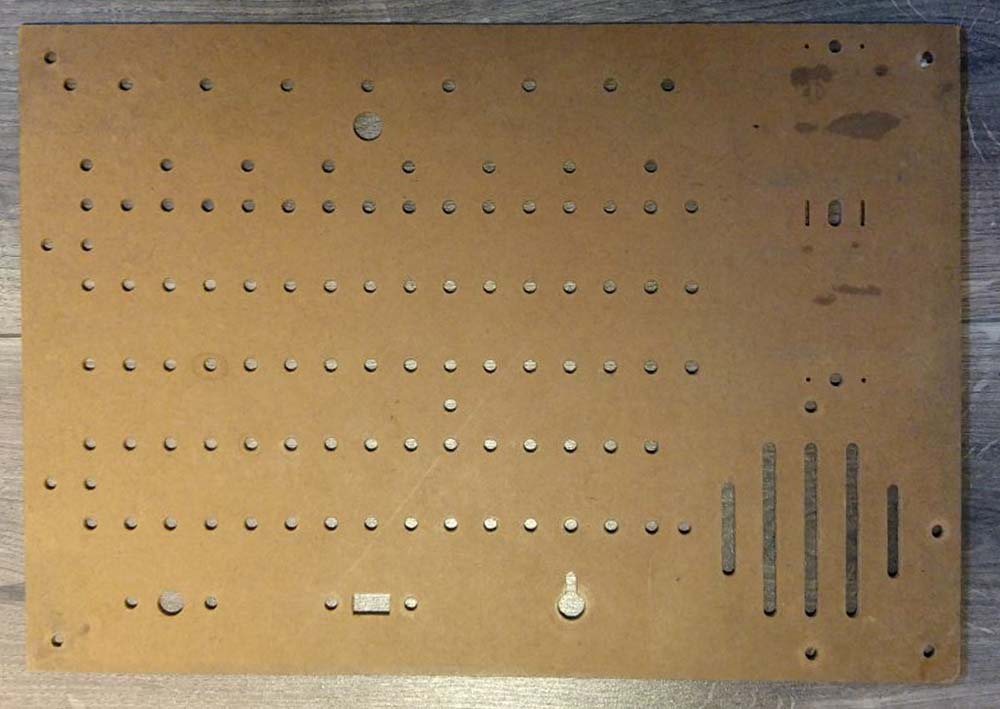
EE board design with exact measurements. |
Look on the South African EE20 page where John Lusty from South Africa tells about the EE20 kit he bought at age 11 and how this influenced his career.
Hugo Sneyers acquired in 2005 an EE20 kit and found in the box an addition to the midwave radio experiments: long wave radio (‘grande onde’ and ‘petites onde’. I have acquired a similar kit recently. See the French EE20 page
After building my Pionier Junior II and getting bored with the possibilities I managed to get an EE8 kit. And this kit made it possible to explore much more than just a radio: in total eight experiments (hence the name EE8) including quite a good midwave radio receiver. The EE20 contains 20 experiments, the A20 box is the upgrade from EE8 to EE20.
Watch out, I see offered on auction sites kits as EE20 which in fact are A20 kits!
As a boy I did not have the money to get a A20 kit but since the manual of the EE8 also covers the EE20 I did buy the components like transistor and loudspeakers and build all the experiments.
And those components also were used to upgrade the Pionier II to a sort of Pionier III radio.
The manual is, like the Pionier manual, quite good in explaining the concepts of electronics.
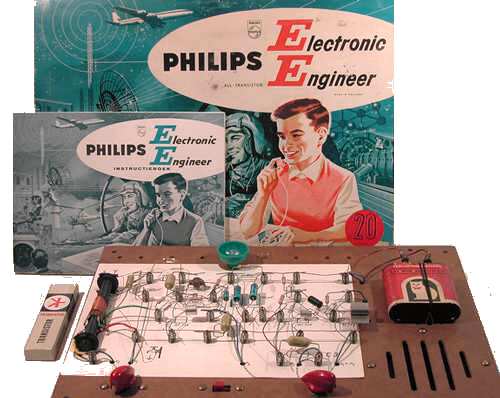
The system of pinheads and boards with holes, first available in the EE5/10 kits, is a big improvement over the system of the Pionier Junior and is used in the EE kits afterwards. Also the use of templates that are placed on the board made building the experiments quite convenient. The weak point is the the use of the transistors (germanium like AF116 and AC126 as is, the wires break often and it is to easy to wire them wrong.
The loudspeakers are small, and the quality is lousy. Attaching with screws and bolts helps, and a separate board helps even more, though it is not hifi. That lack of quality made me explore building real quality amplifiers and loudspeakers and the EE8 kit disappeared in the quick growing collection of electronic components.
The designs in the EE8/20 are ranging from electronic organ, intercom to light-enabed switches and ofcourse the radio, as shown in the next picture.
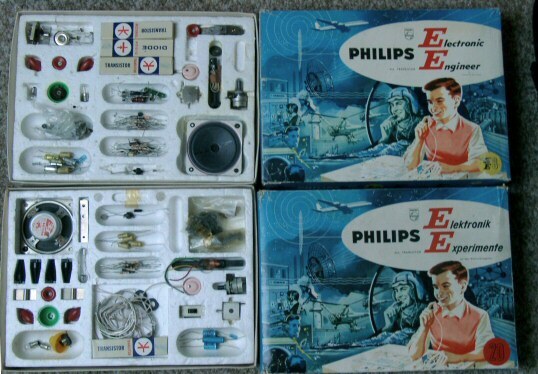
Here you see the two EE8 (top) and EE20 (bottom) boxes I have now. The boxes contain lots of components in not-original locations and some extra.
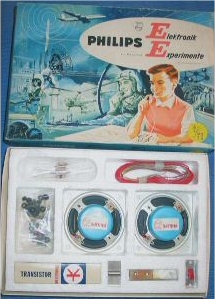
The next picture shows a EE20 box in new state. Note the different sticker on the back of the loudspeaker.
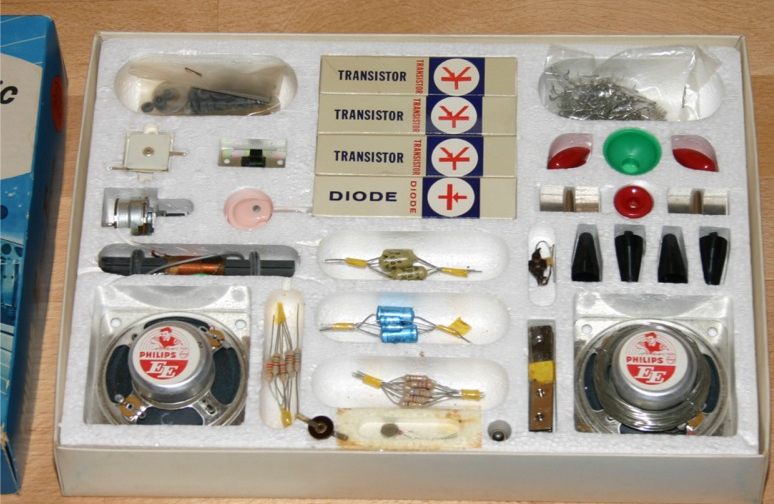
Kevin Kingsland made some nice photos of the EE20 as sold in the United Kingdom.
Click on the images to see a larger photo.
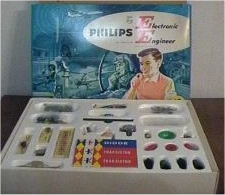
The EE8 UK variant
Thanks to Andres from Argentina I can show you the EE20 kit as made and sold in Argentina.
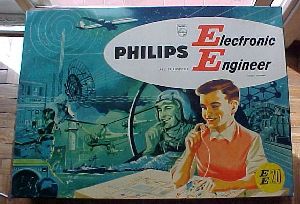 |
|
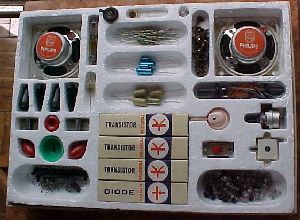 |
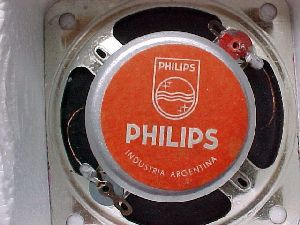 |
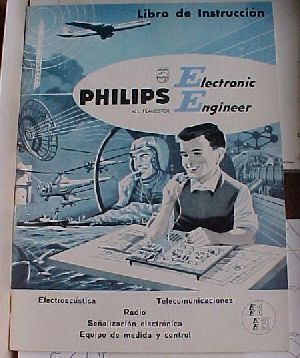 |
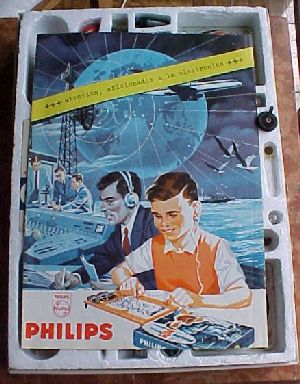 |
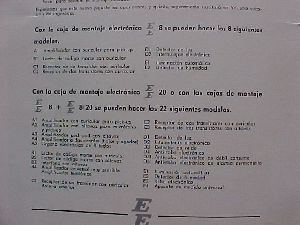 |
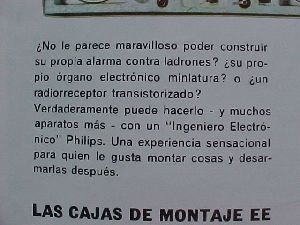 |
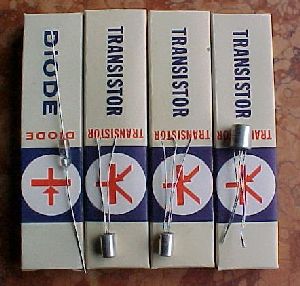 |
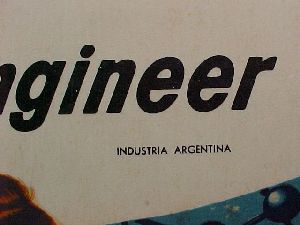 |
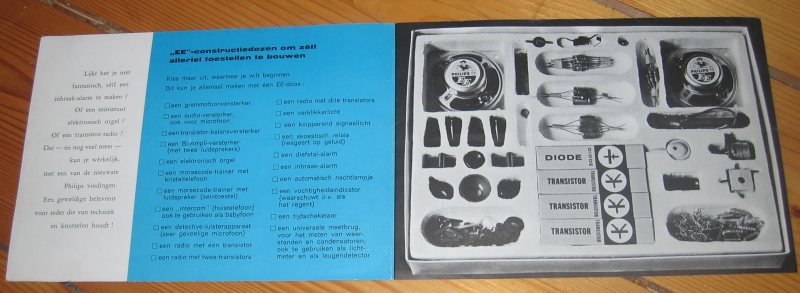
I found an advertisement in a dutch magazine (august 1964) for the EE8/20 and the RE 1/2. Note the prices! Click on the pictures below to see a larger version.
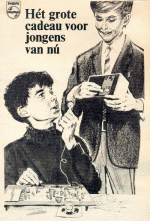 |
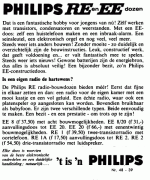 |
The Mechanical Engineer kit ME1200 and the EE8/20 are from the same period, around 1964.
See the ME1200 page how Philips made it possible to combine the electronics of the EE8/20 with the mechanics of the ME1200. This is repeated for the EE1003/ME1201 kits.
The transistors and diode in the EE8 and EE20 are germanium types. Not only is the construction method, by directly using the wires, dangerous for the lifetime, also the transistors like AF116 are quite vulnerable. I remember many visits to the electronics shop to buy replacements. The dutch may remember Aurora kontakt in the Vijzelstraat in Amsterdam!
The AF116 is very hard to replace these days. But types like the AF125, AF126 and AF127 are still available and do perform quite well as replacement.
The AC126 and AC128 are still for sale as are germanium diodes like the OA90.
The next picture may help in using these replacement transistors.
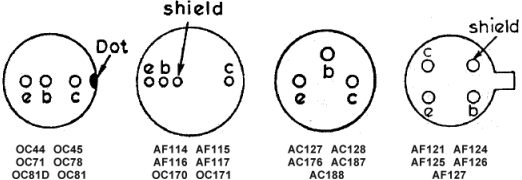

German A20 kit
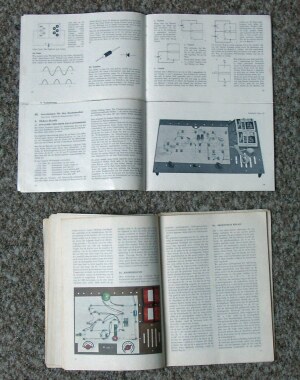
Above the german manual,
bottom the dutch colour version
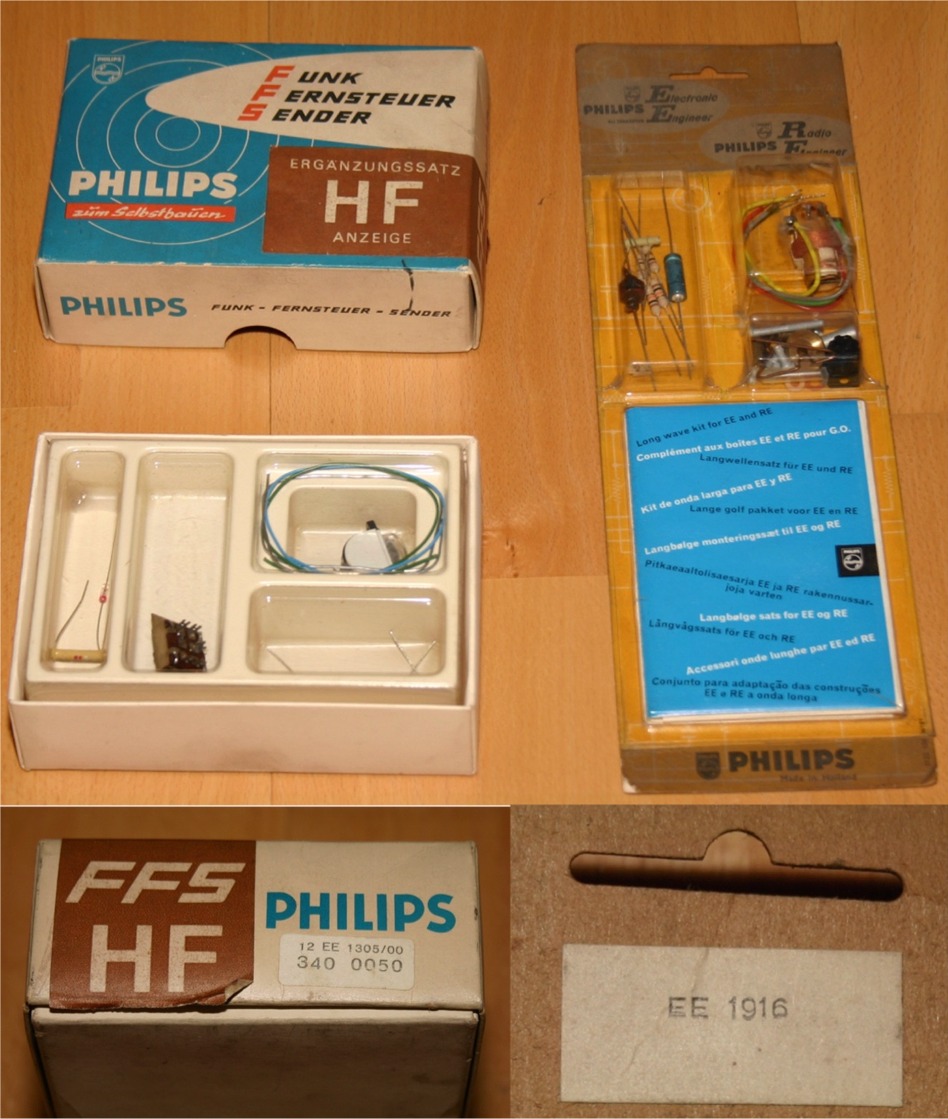
EE1916 LW add-on
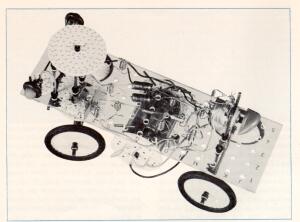
Combination of ME1200 and EE20
EE8 kit for 8 experiments
EE20 kit with 20 experiments
A20 kit expansion of EE8 to EE20
For a very short period, after the Philips Pionier Junior series ended and before the EE8/A20/E20 kits appeared worldwide, Philips has manufactured the EE5/10 series. These two kits (no upgrade kit from EE5 to 10 is known) are a lot alike the successors EE8 and EE20.
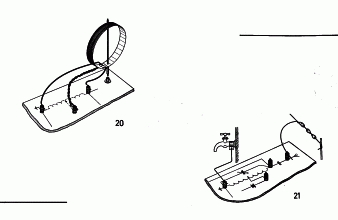
Experiments you can build with the EE5/10 are: radio receiver with diode, one or two transistors and loudspeaker, intercom (already called Interphone), audio amplifier, flashing light, burglar alarm, morsecode trainer, electronic xylophone, moisture alarm and light detector
The difference between EE5 and EE10 are two loudspeakers, an extra transistor and more resistors and capacitors. The manual is suitable for both EE5 and EE10.
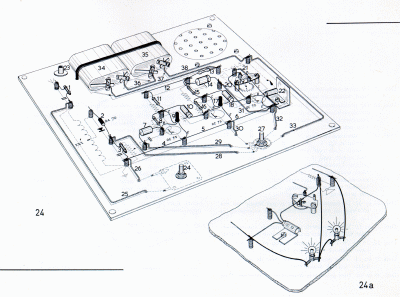
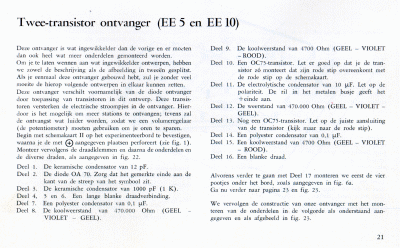
These kits were not only sold in the Netherlands and Belgium, but at least also in Germany and France.
On this page I show you the photos os EE5 and 10 kits once in in my possession and the manuals and templates scans on a separate page.
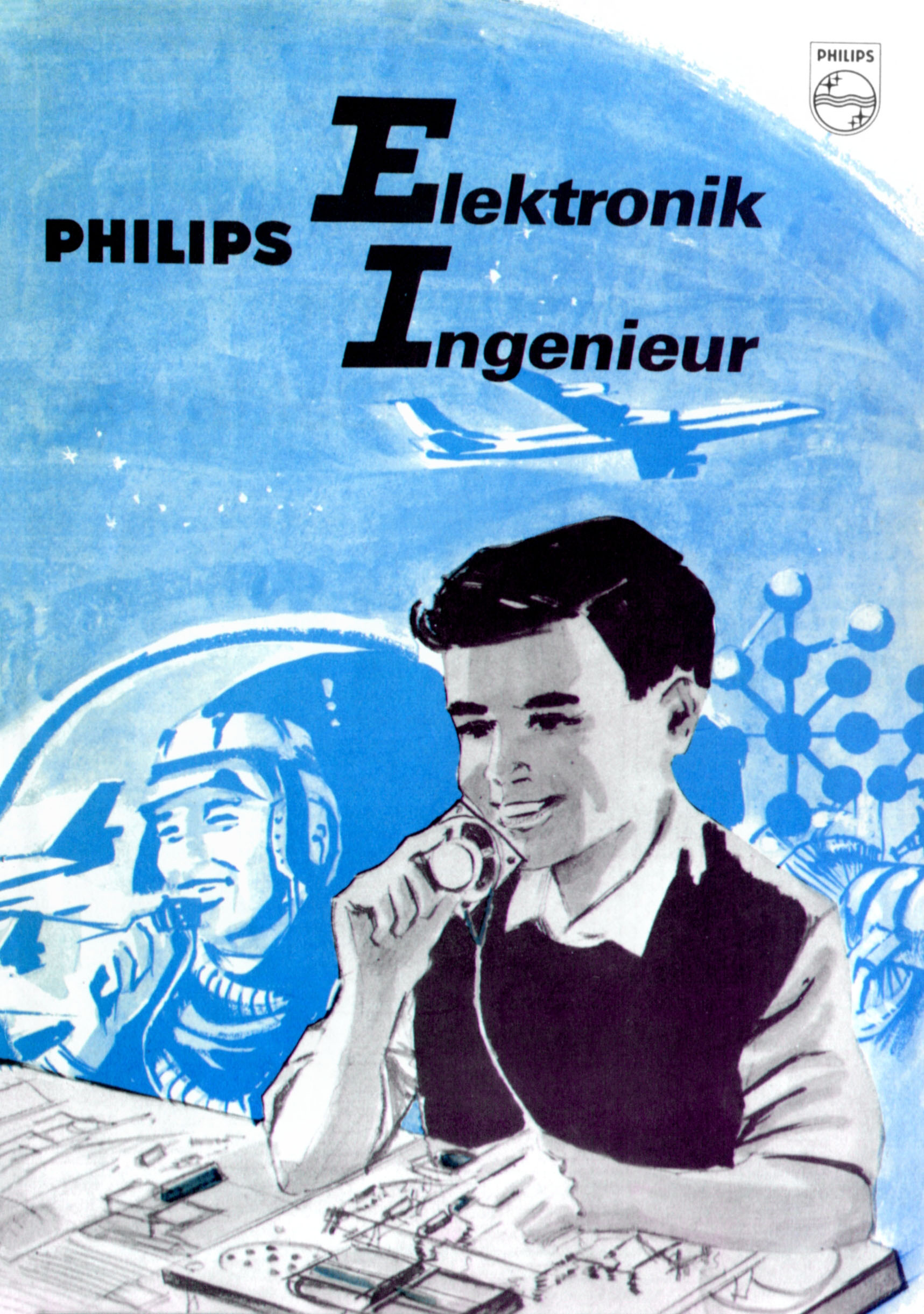 |
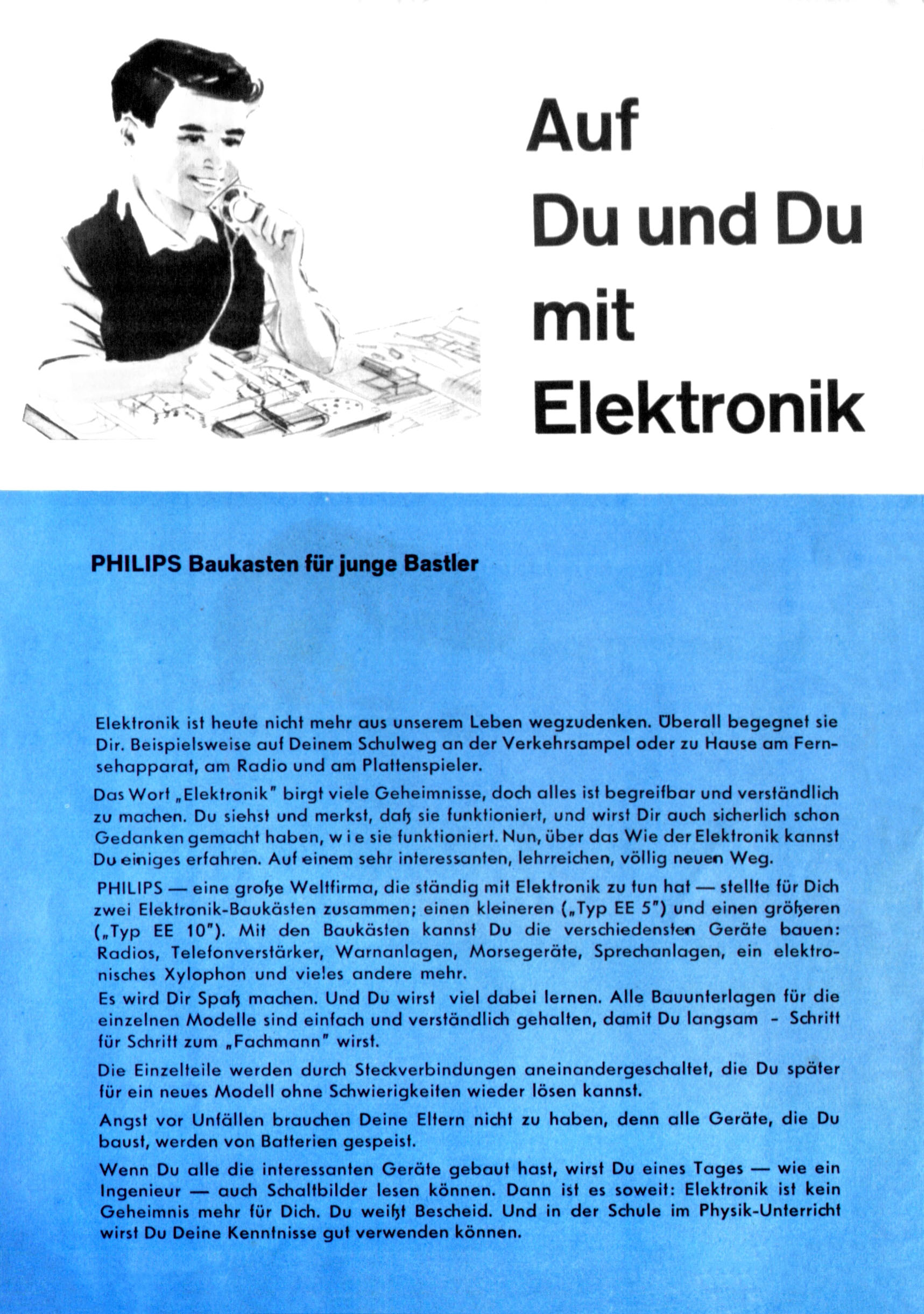 |
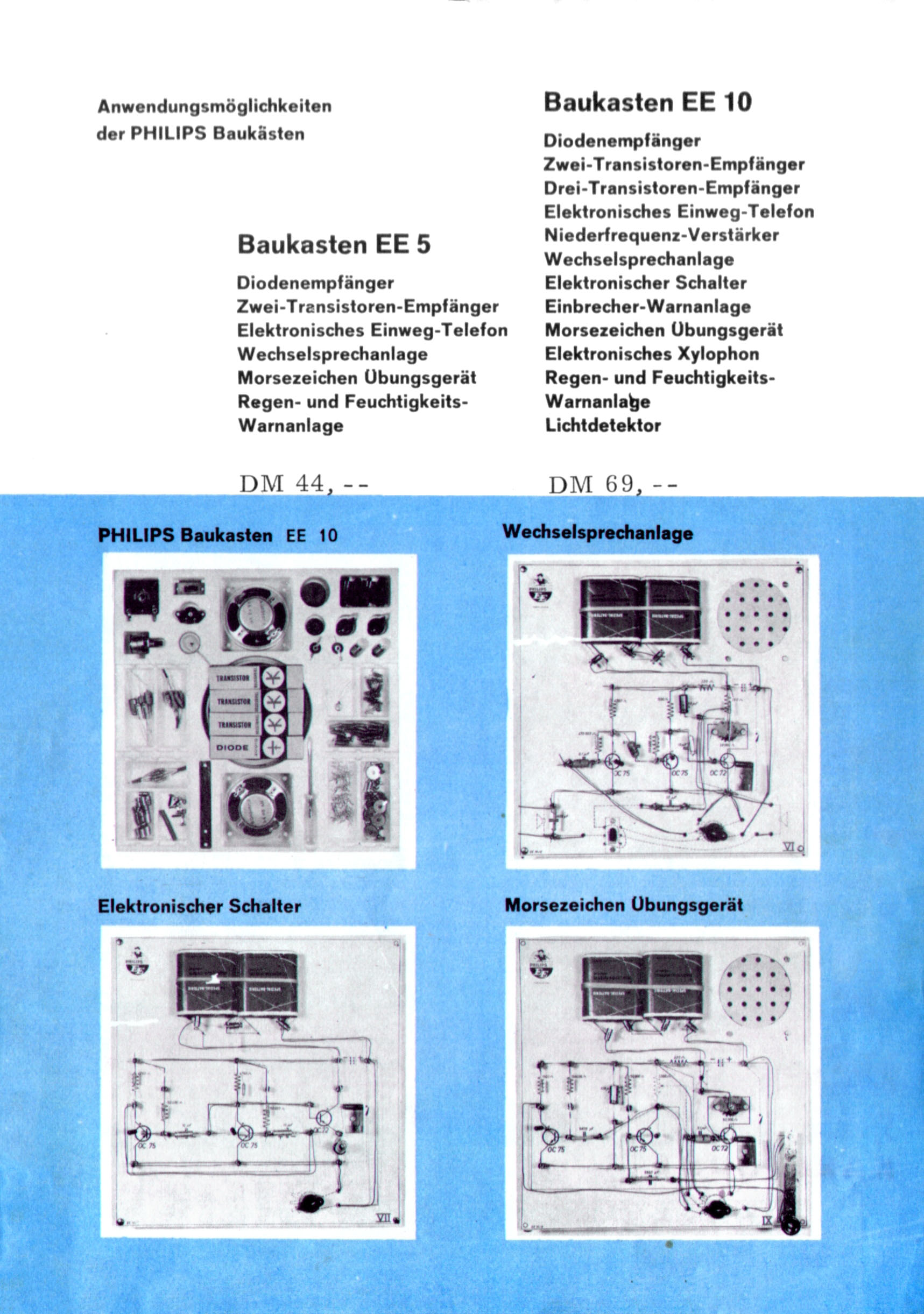 |
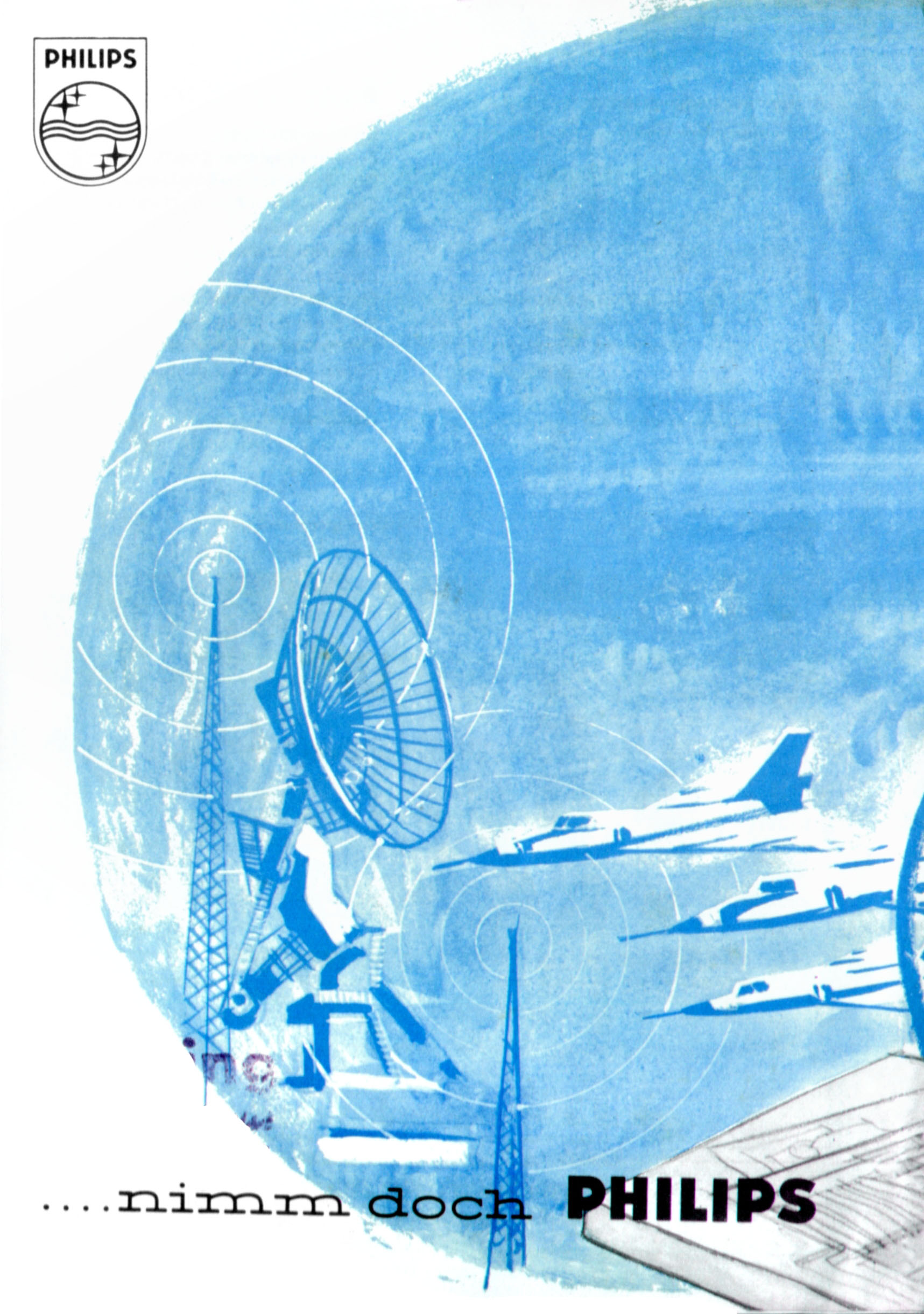 |
| German kit | 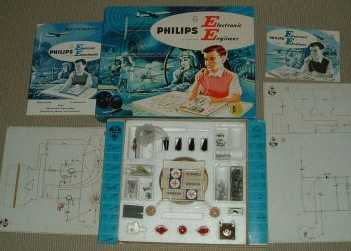 |
| Dutch/french/belgium kit | 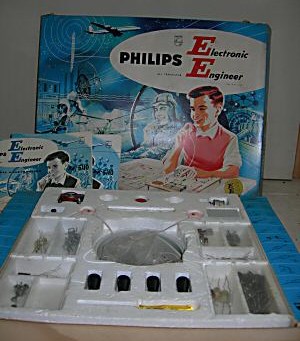 |
| EE10 kit | 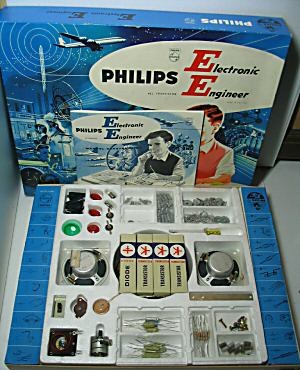 |
A square carton board with many standard holes for the hairpins and two holes for the variable capacitor and resistance.
The next photos show the dimensions.
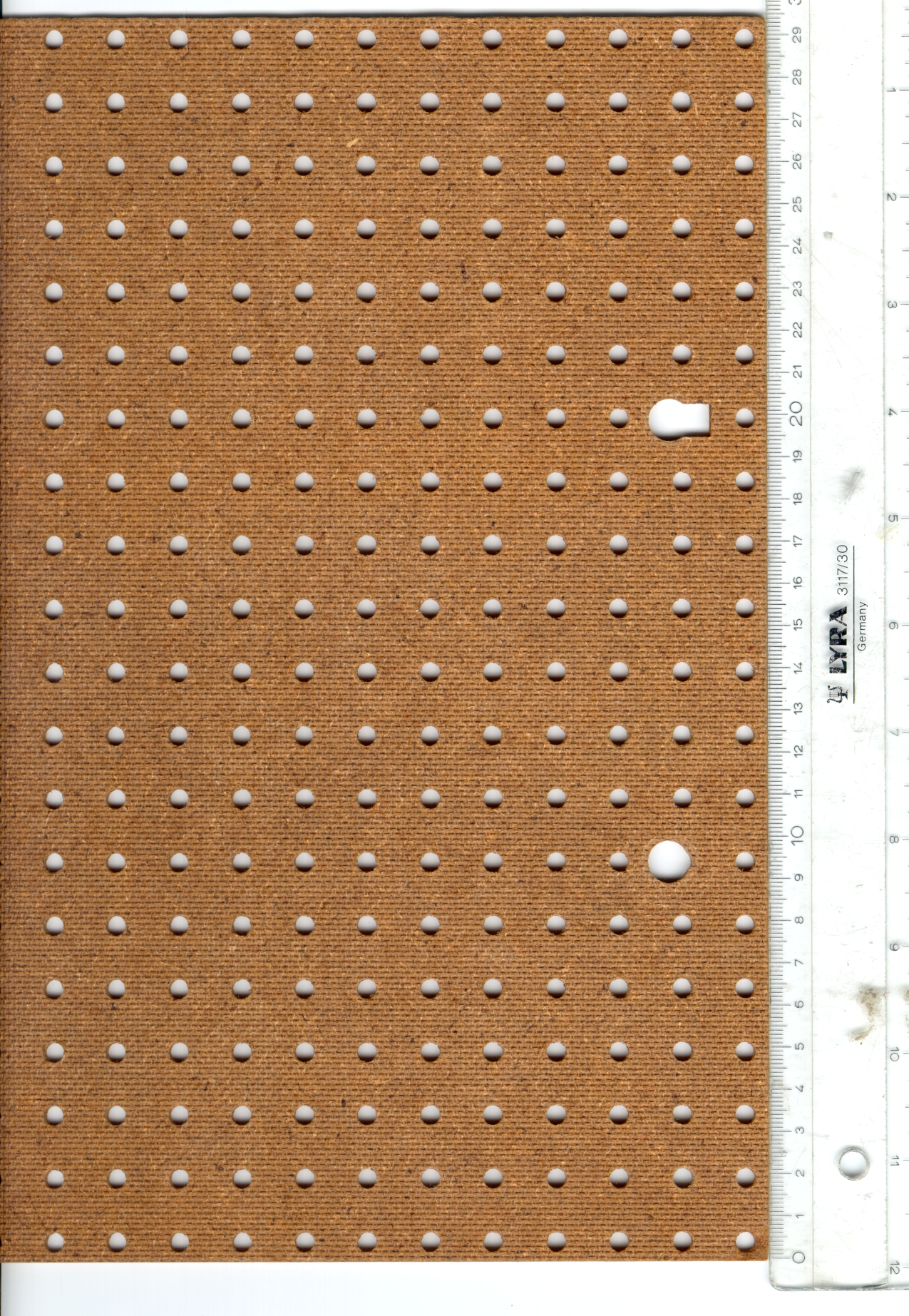
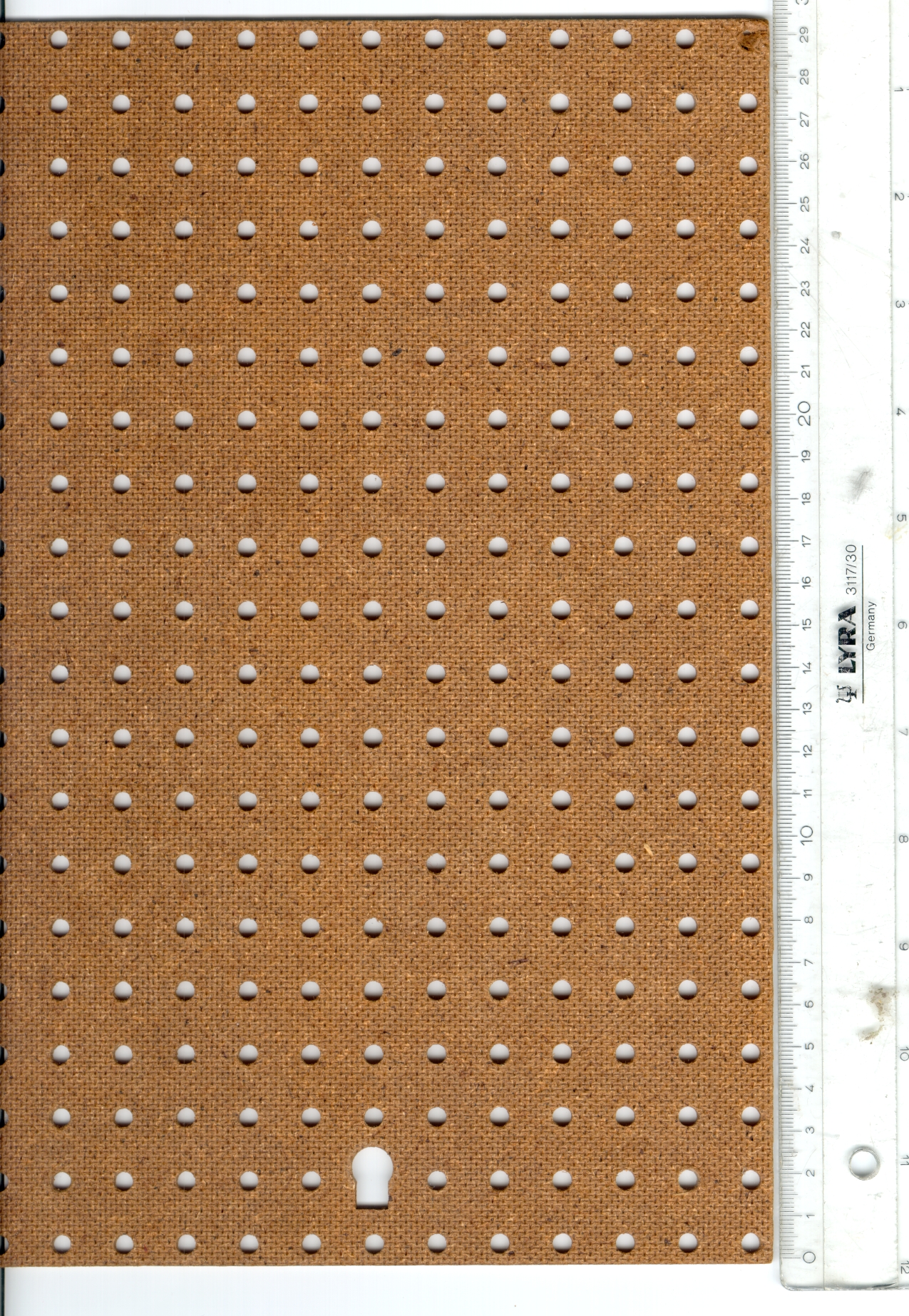
For many years Philips has produced, in many incarnations and later under the flag of Schuco, Electronic Engineer kits.
All had in common a board, hairpins and springs for construction, templates and many challenging experiments.
Each series updated enhanced designs and modernized and added components.

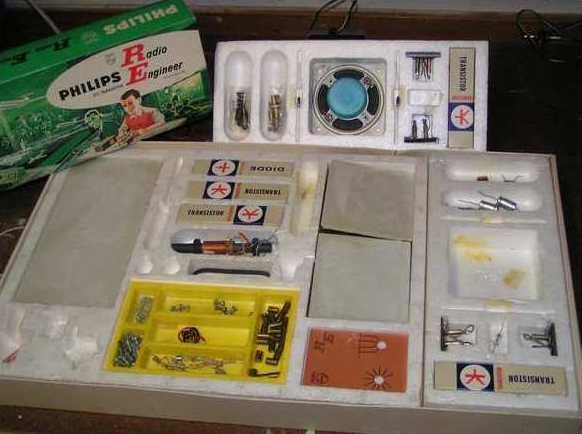
The Radio Engineer 1/2, available after 1960, is a build-yourself radio kit. It is a mix
between the nuts and bolts of the Pionier Junior and the more
modern electronics of the EE8/20 kits. The box and manual are
also in the EE8/20 style.
Poster and german manual
Other side of poster and manual opened
The following pictures show the Radio Engineer 2 box and inside.
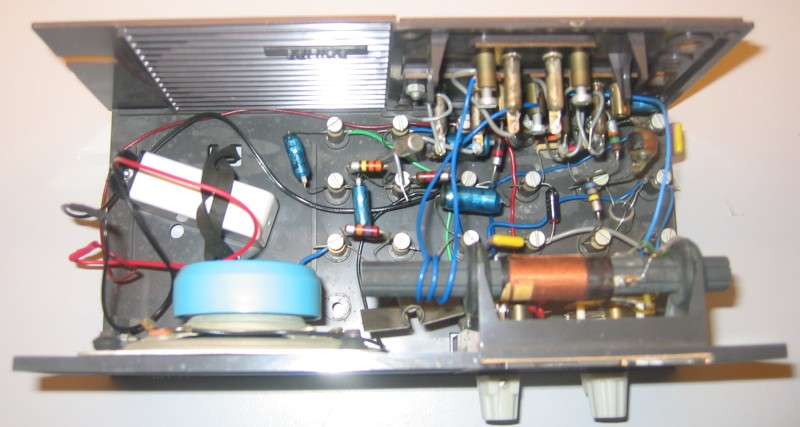
Radio Engineer topview
Radio Engineer with box and dutch manual
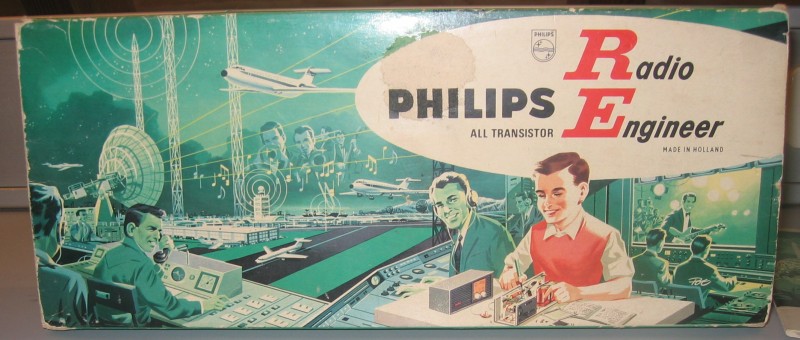
Radio Engineer box
A build-yourself intercom.
This kit is a variant of the EE20 intercom with the screwing techniques of the Pionier series.
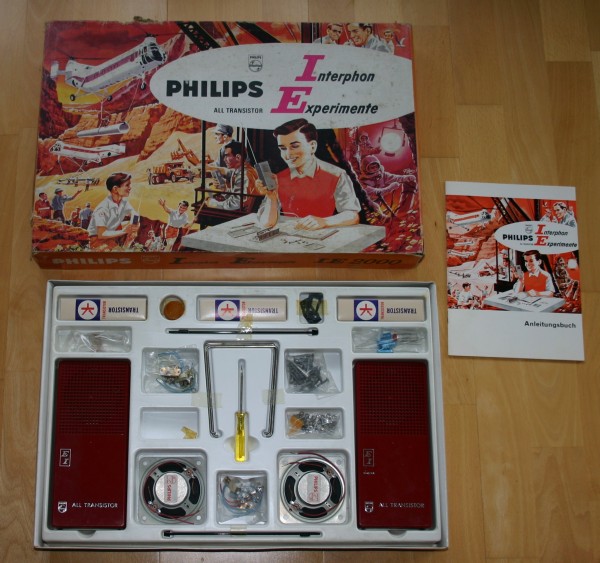
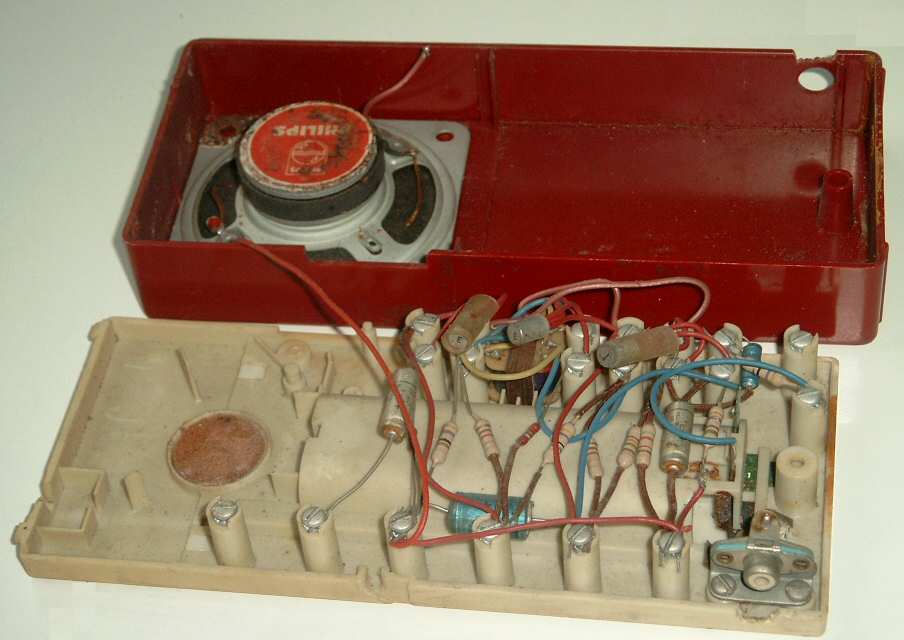
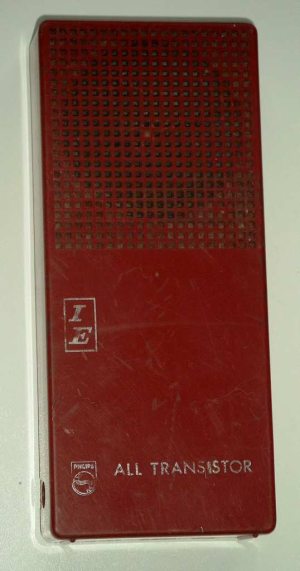
The CE6400 is a microprocessor system, in fact a singleboard computer based on the Signetics 2650 SC/MP. Signetics was owned by Philips.
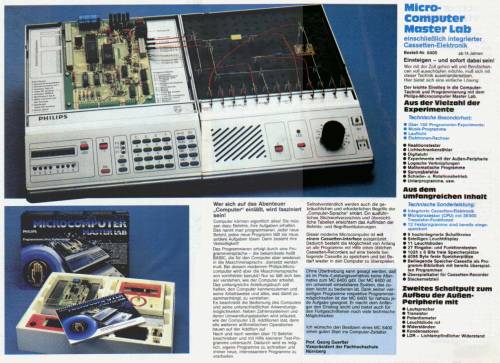
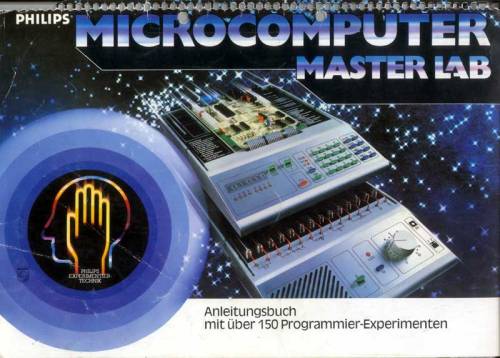
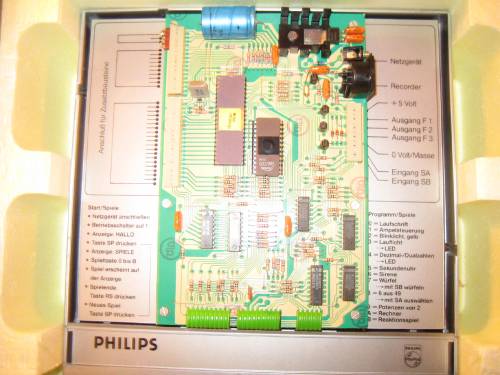
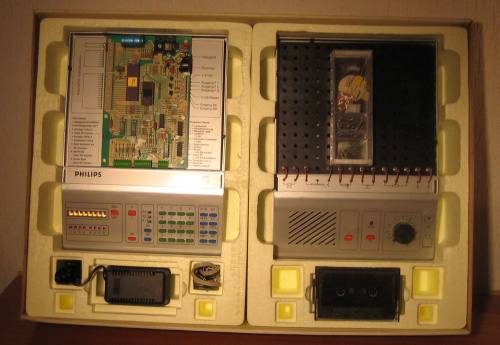
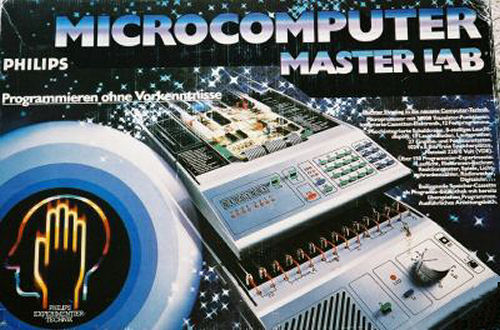
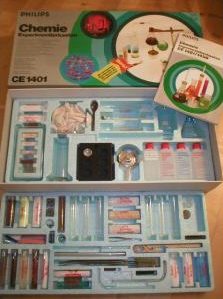
A chemistry experimenters kit. With many experiments, as you can see the box is filled with chemistry tools and components.
|
Some pages (8) from the manual: |
Complete with 5 german books/5 duitstalige handleidingen